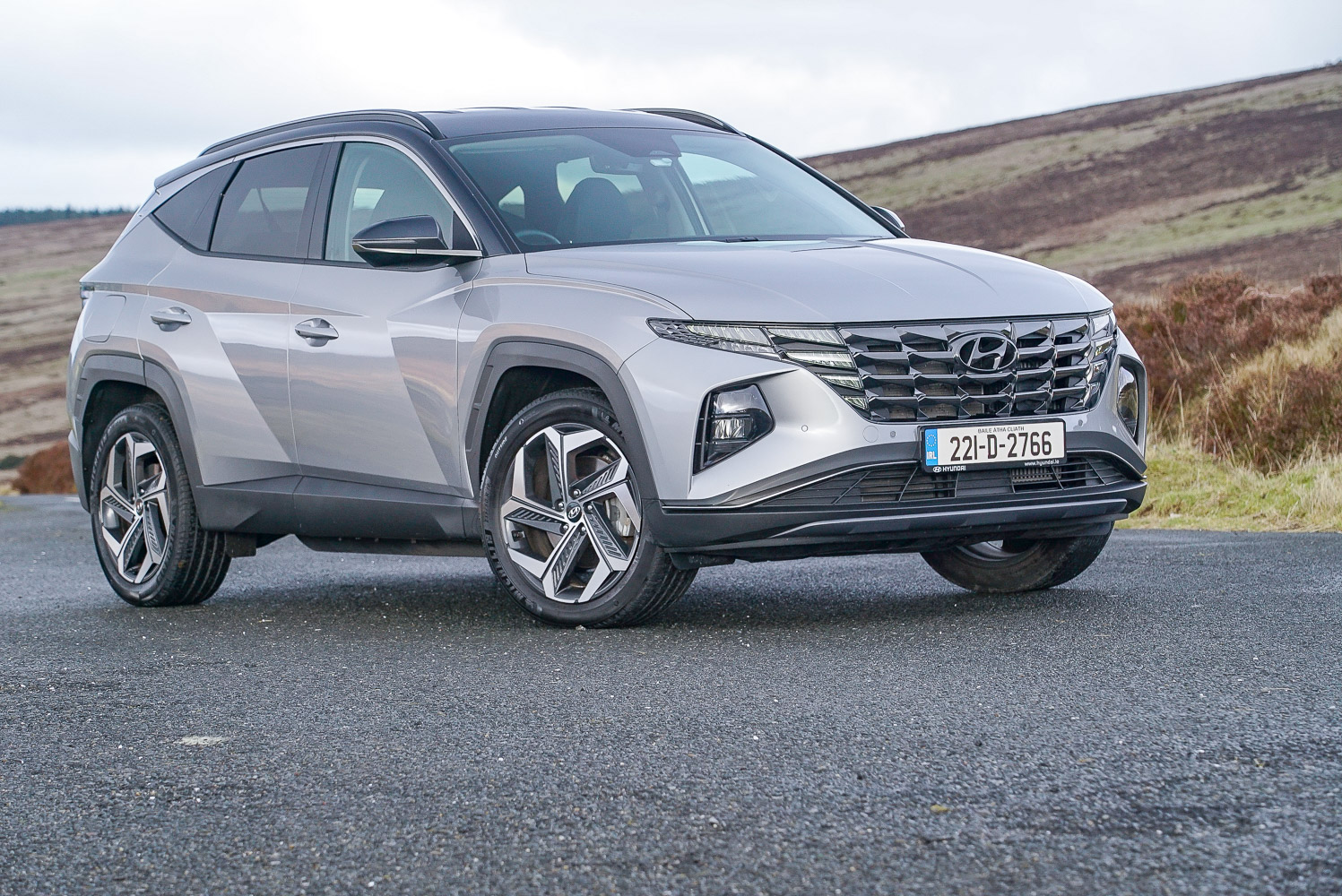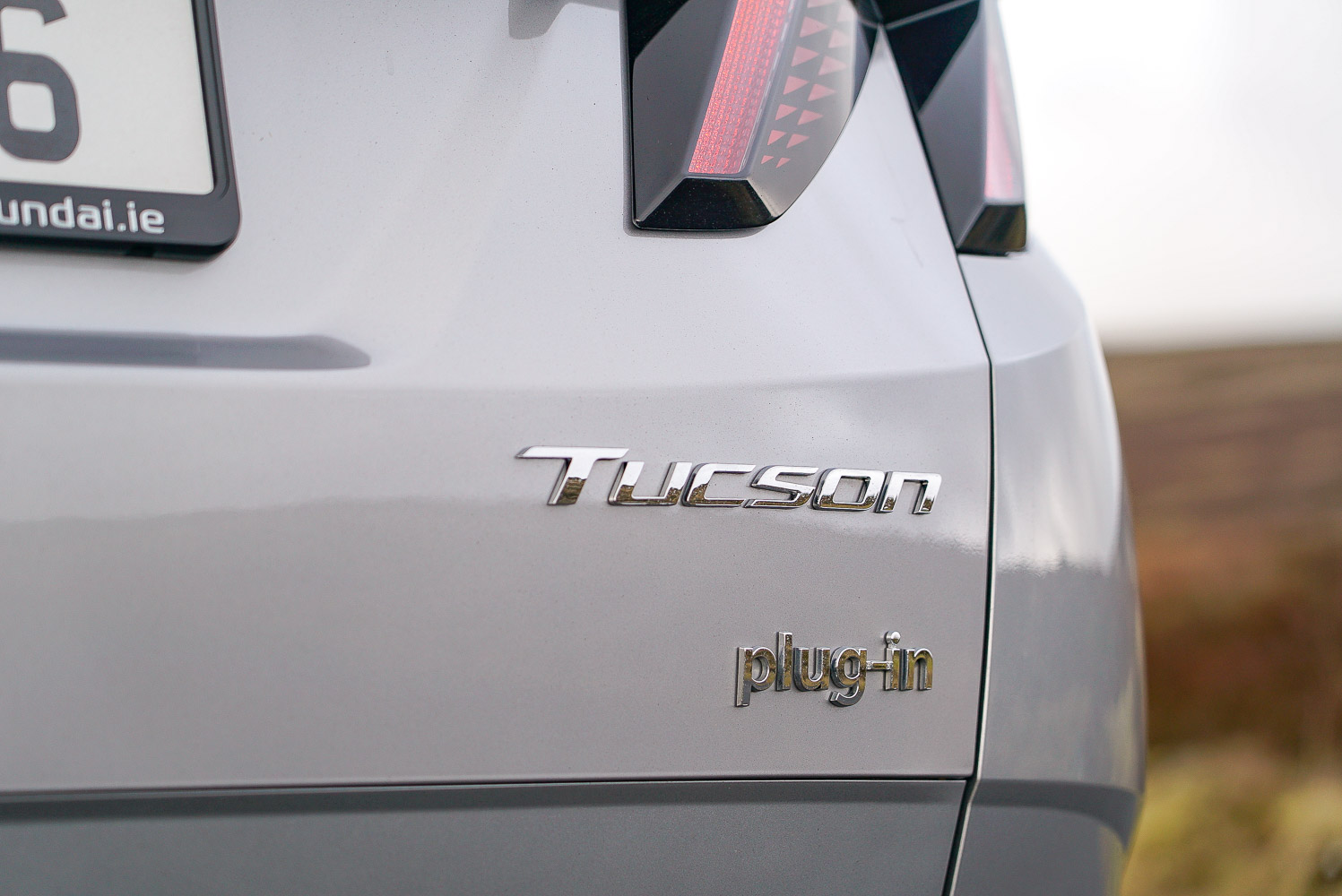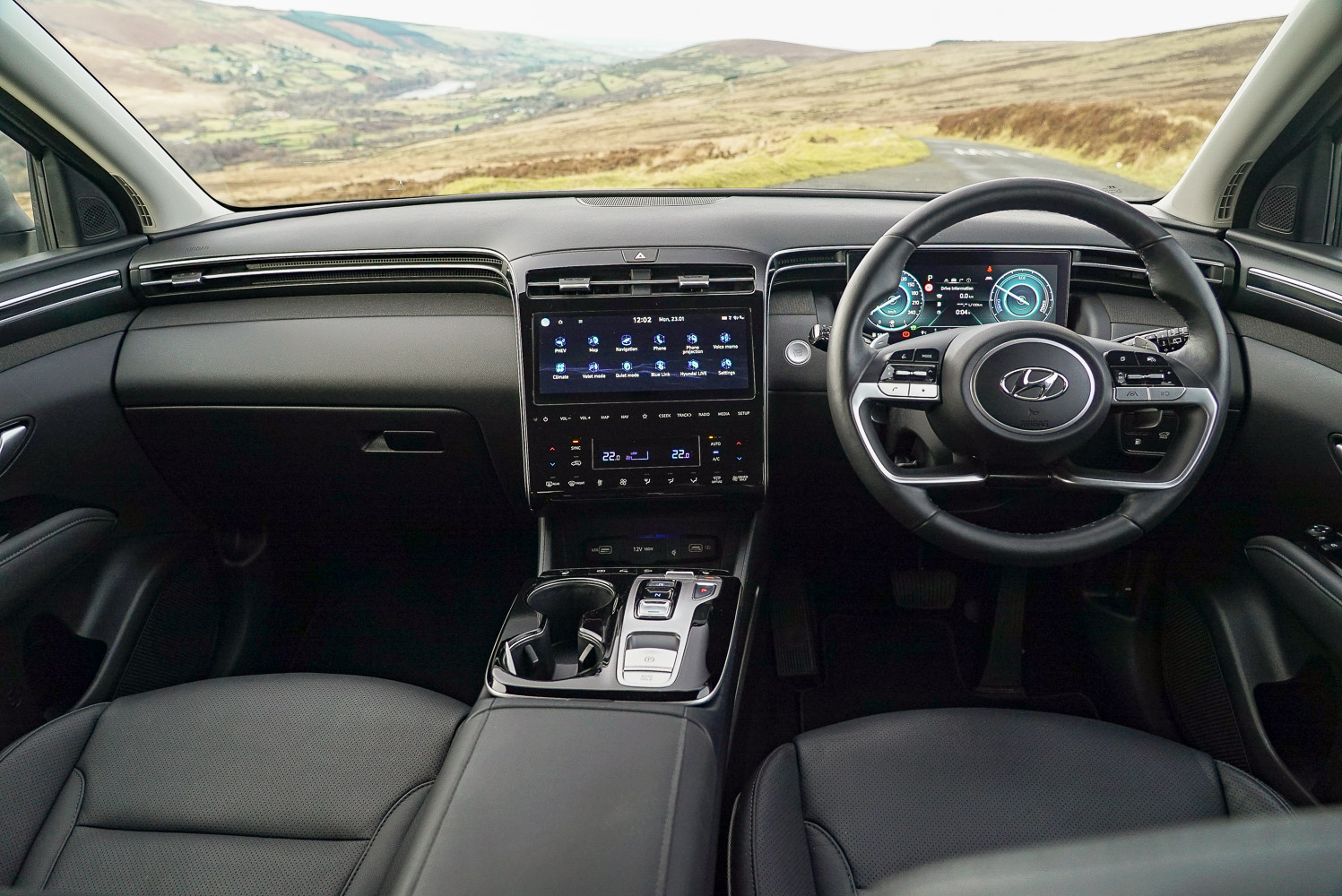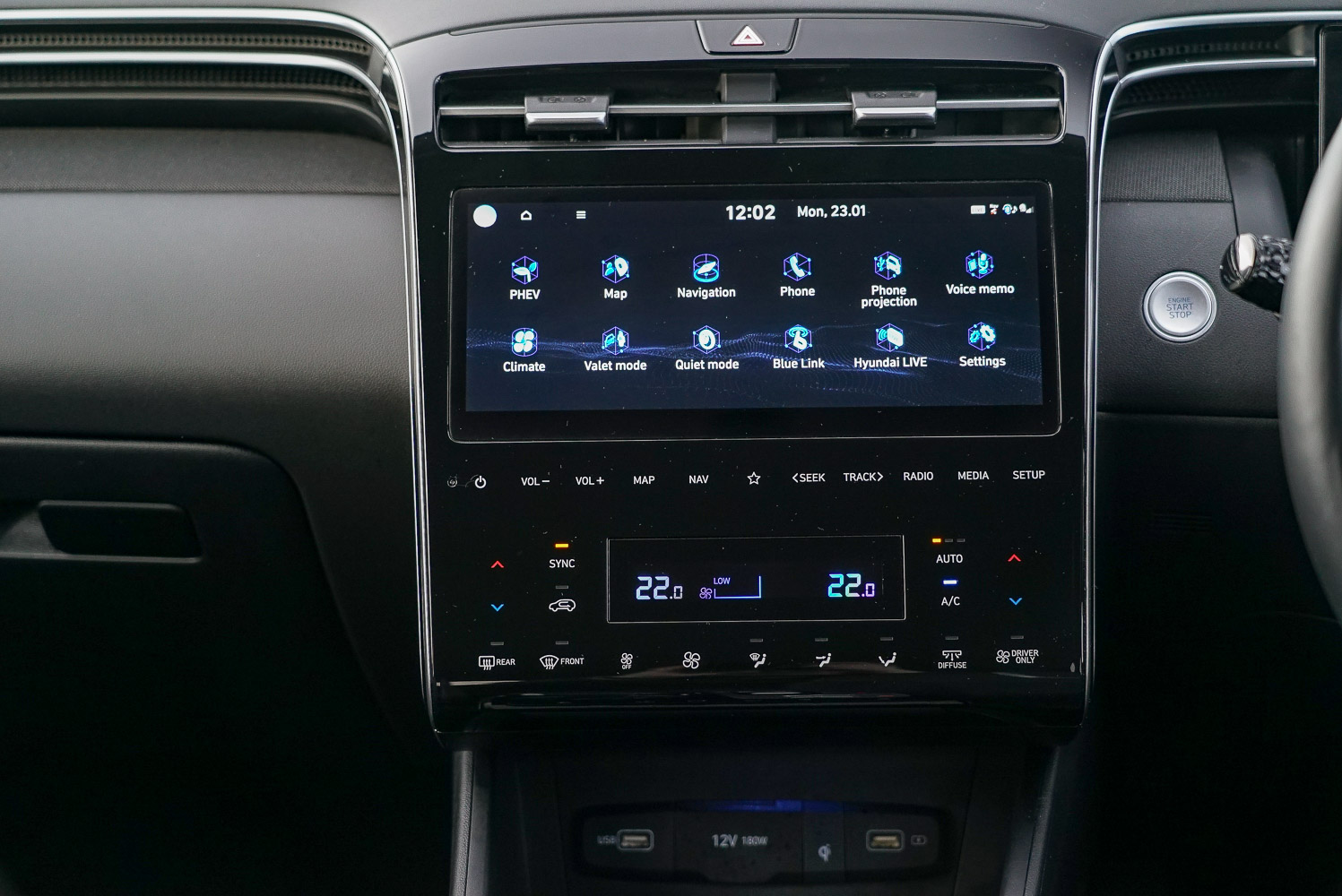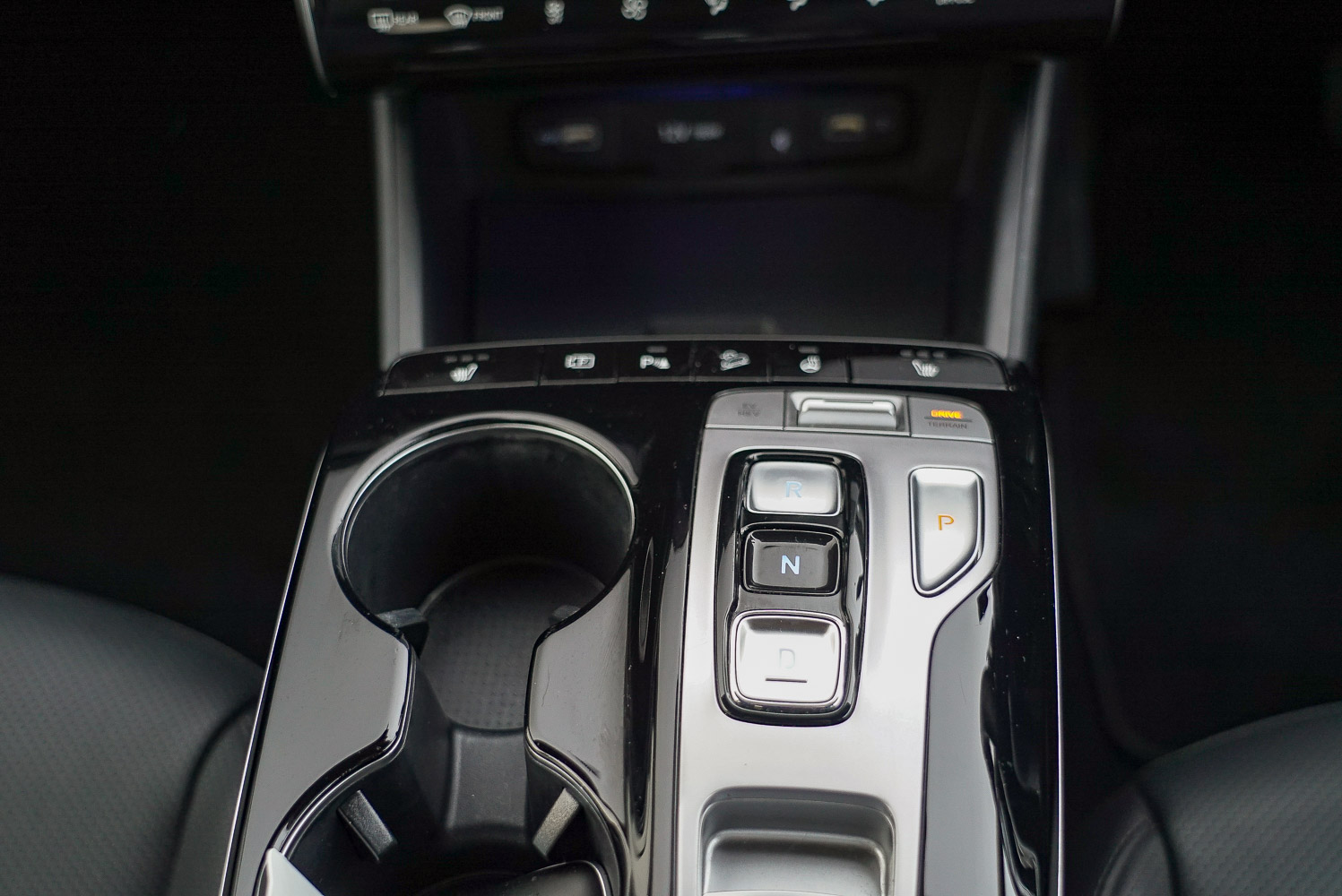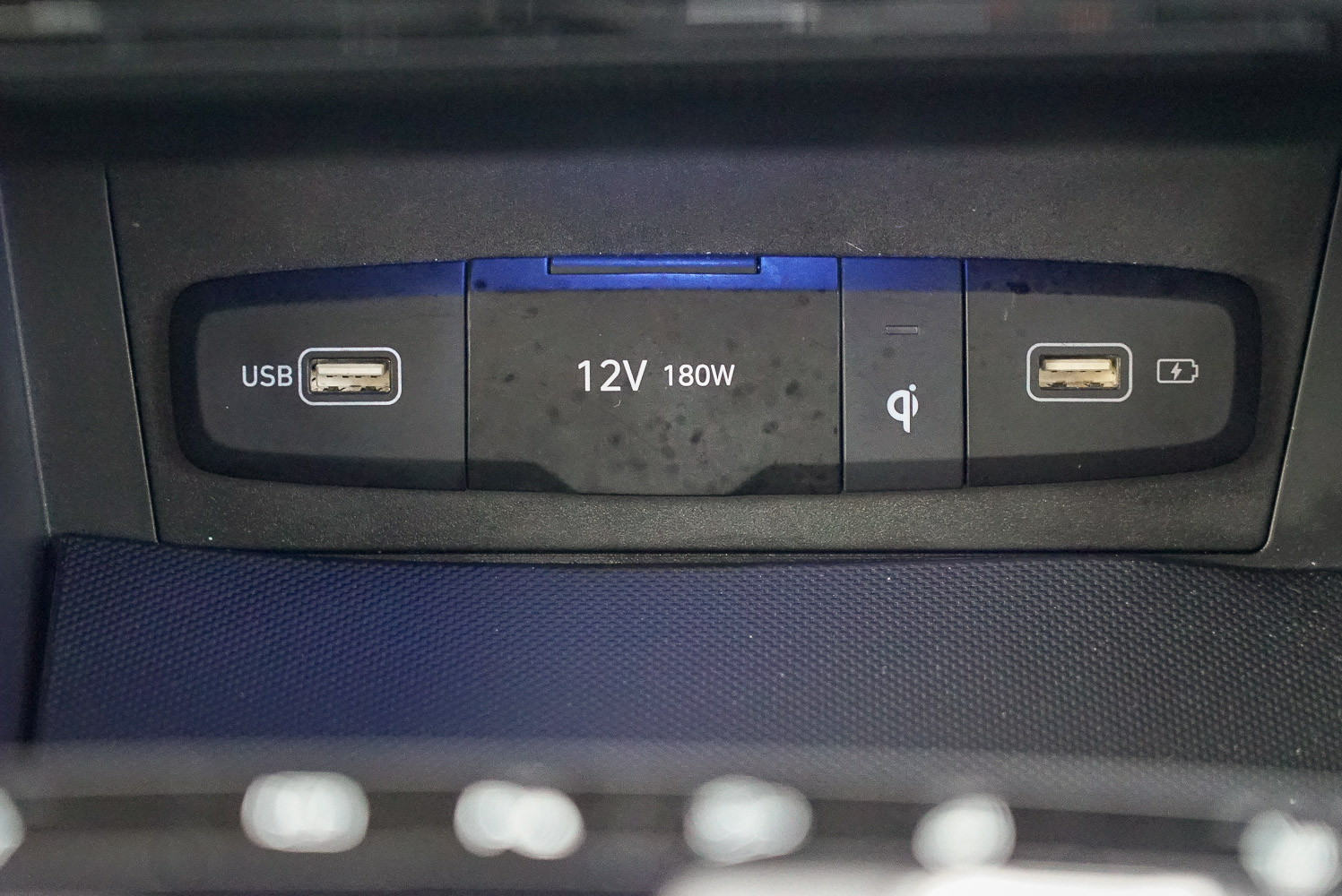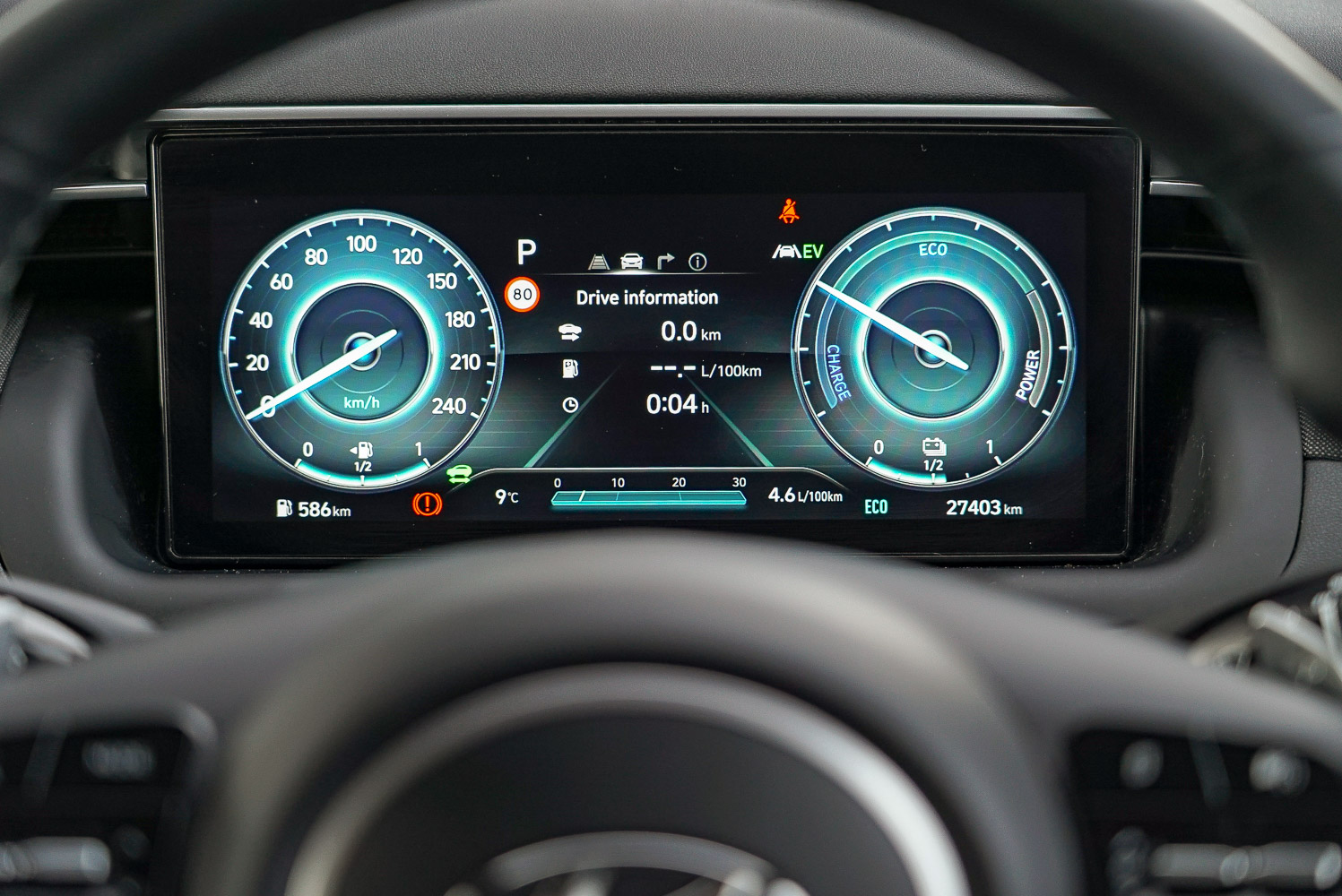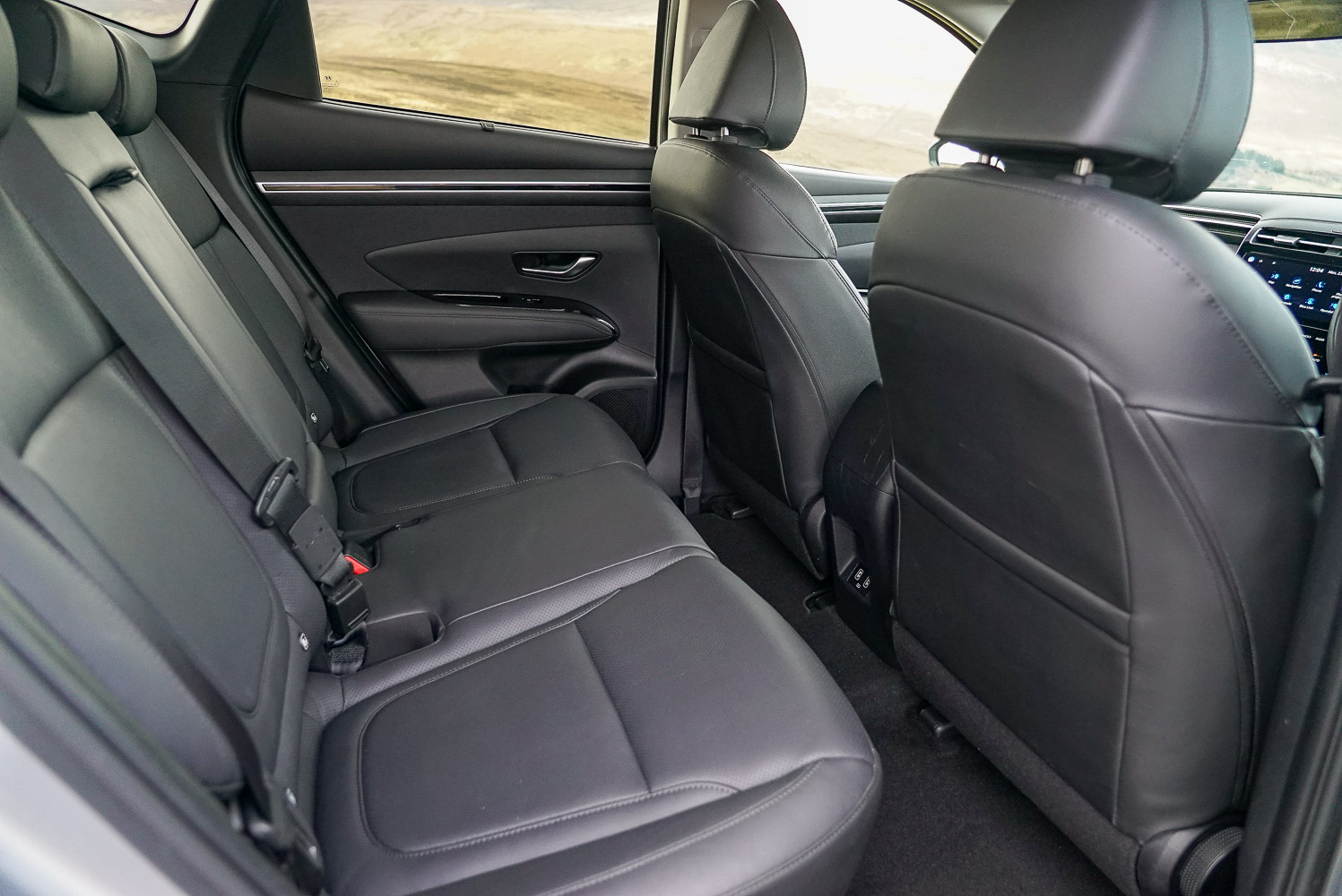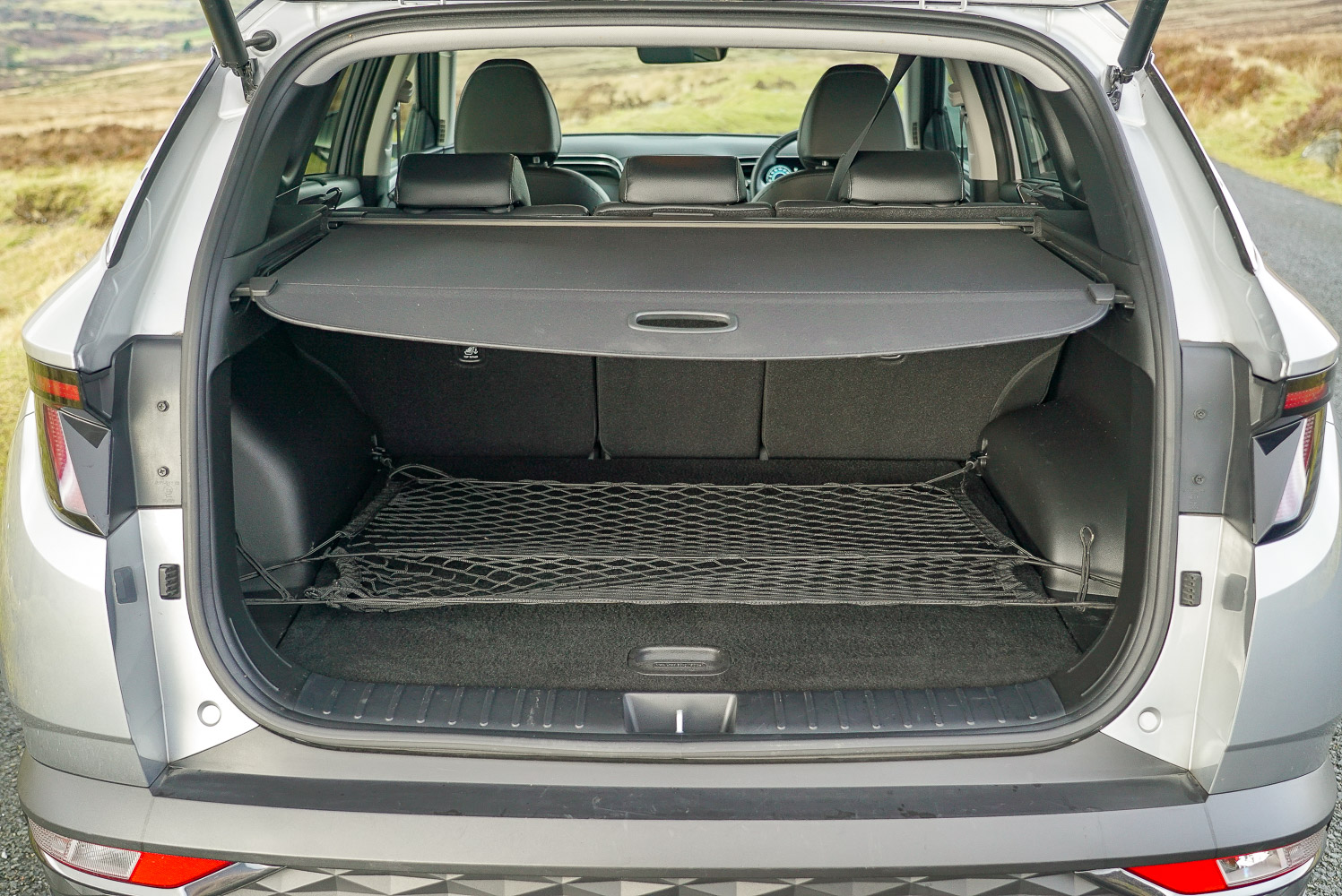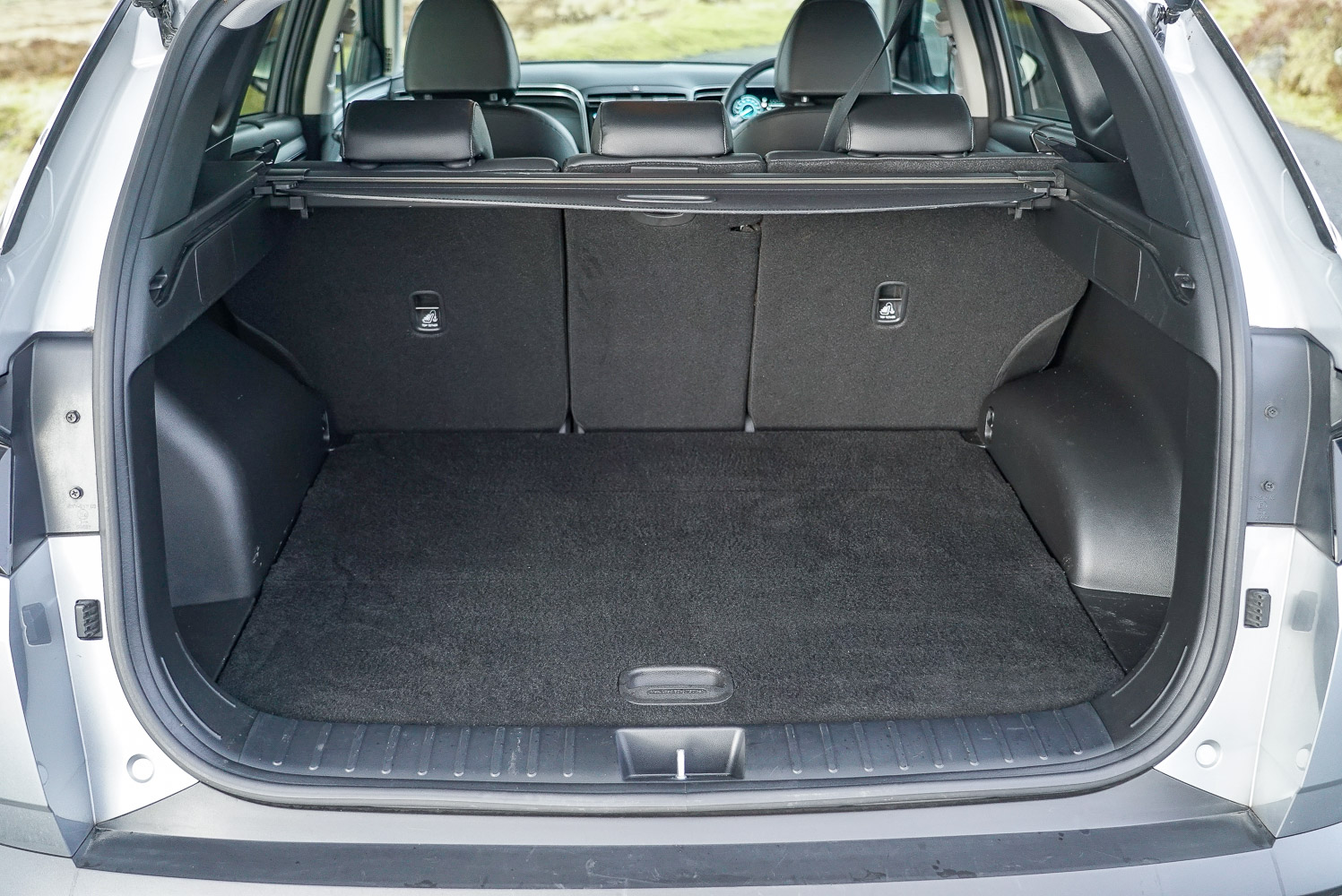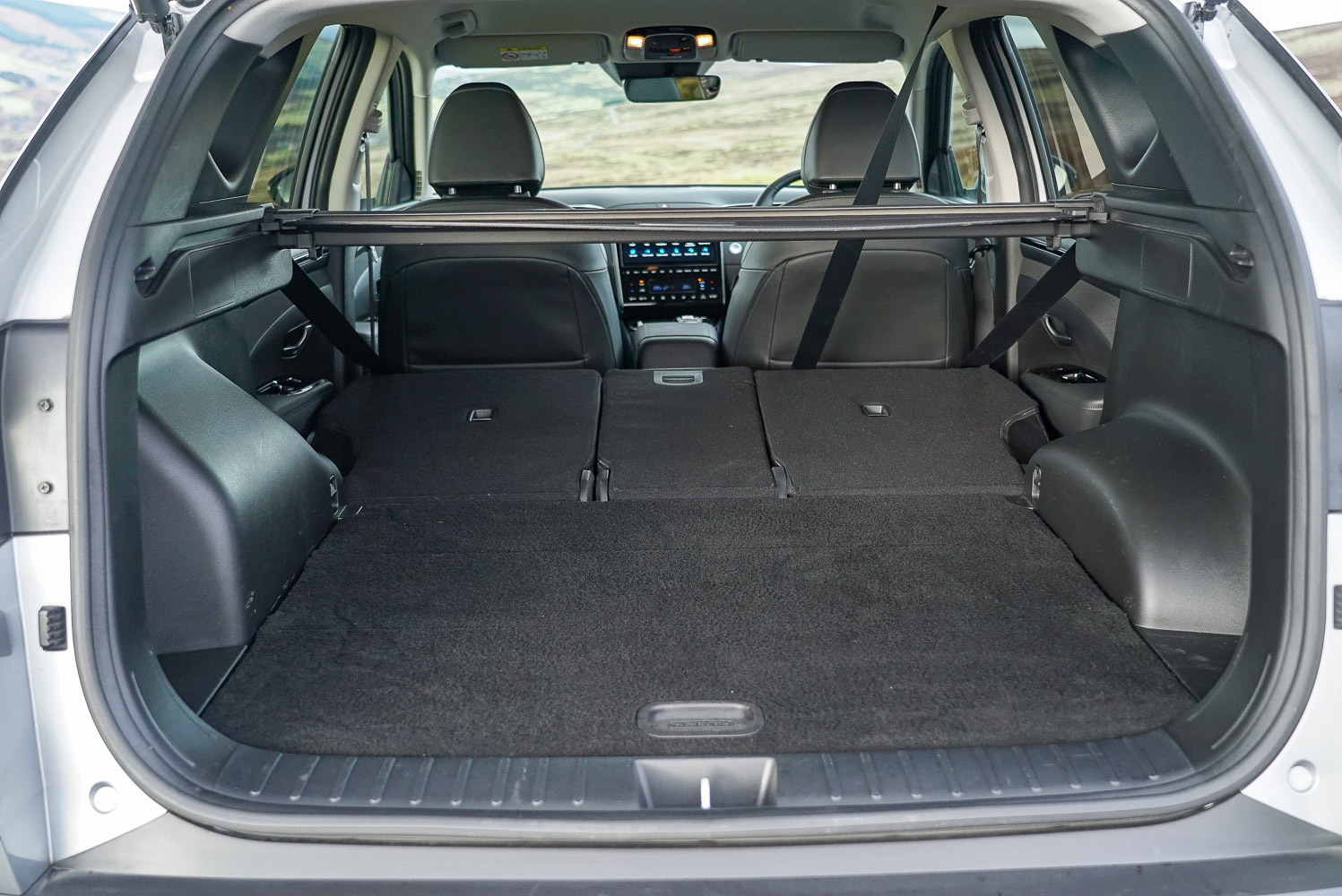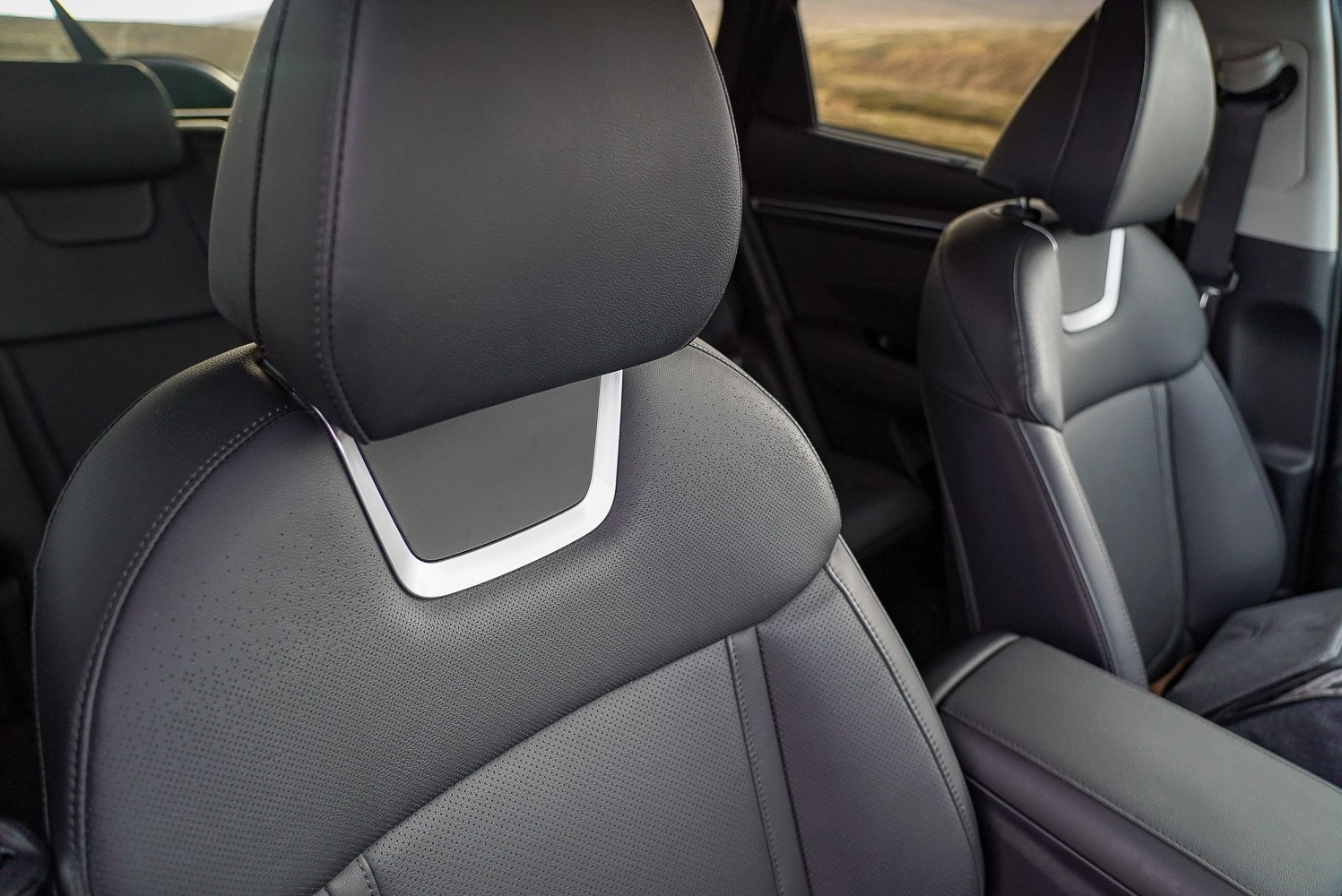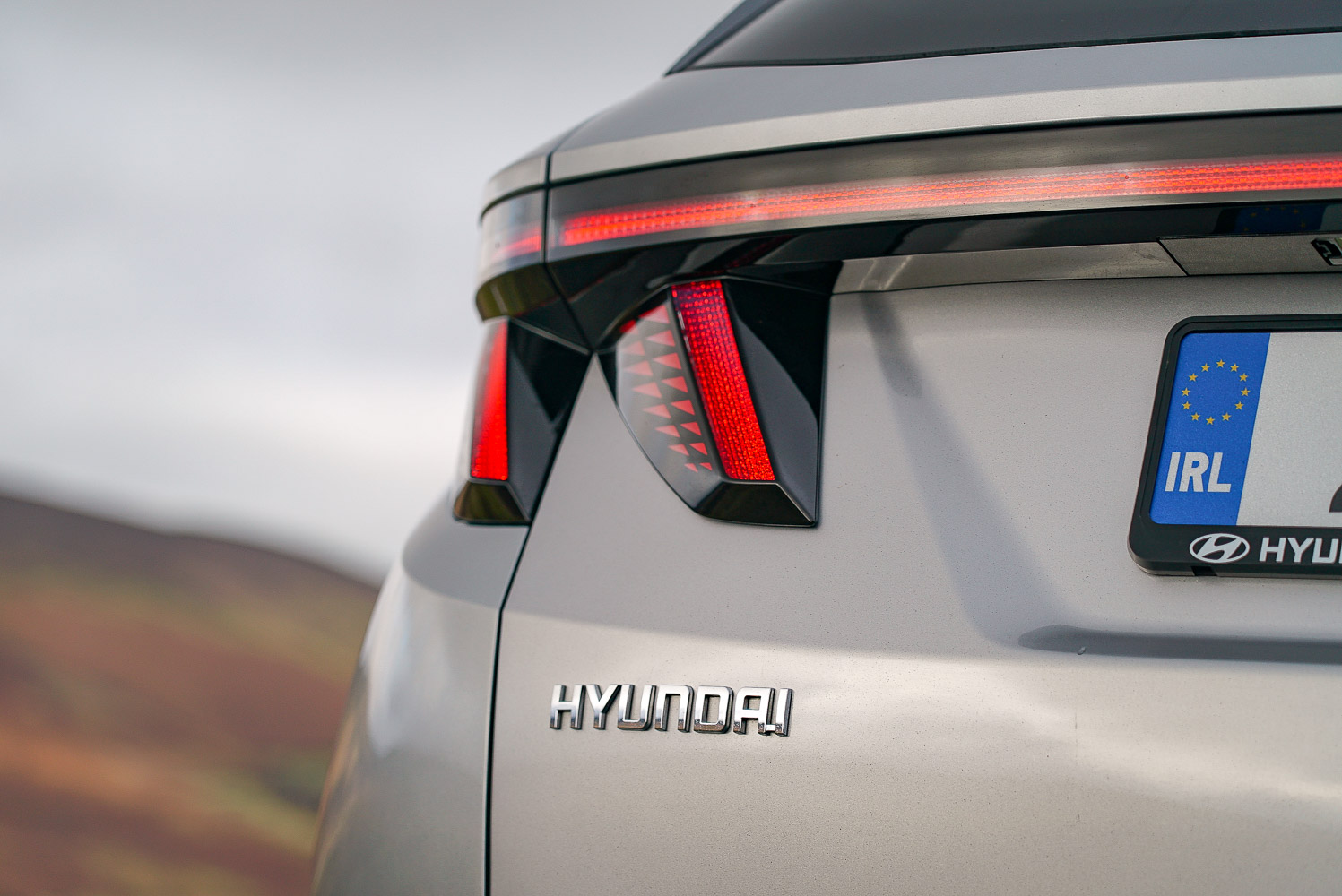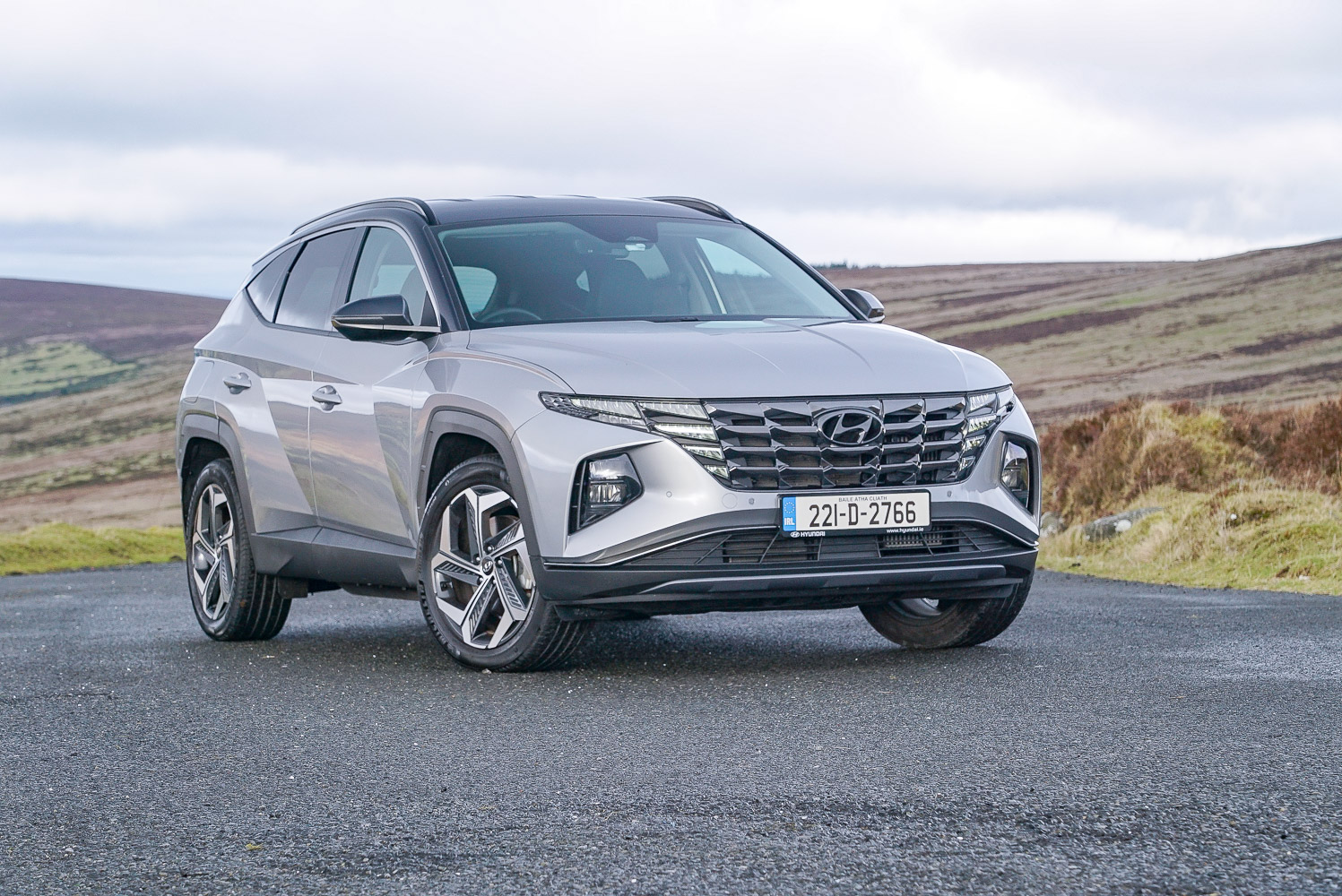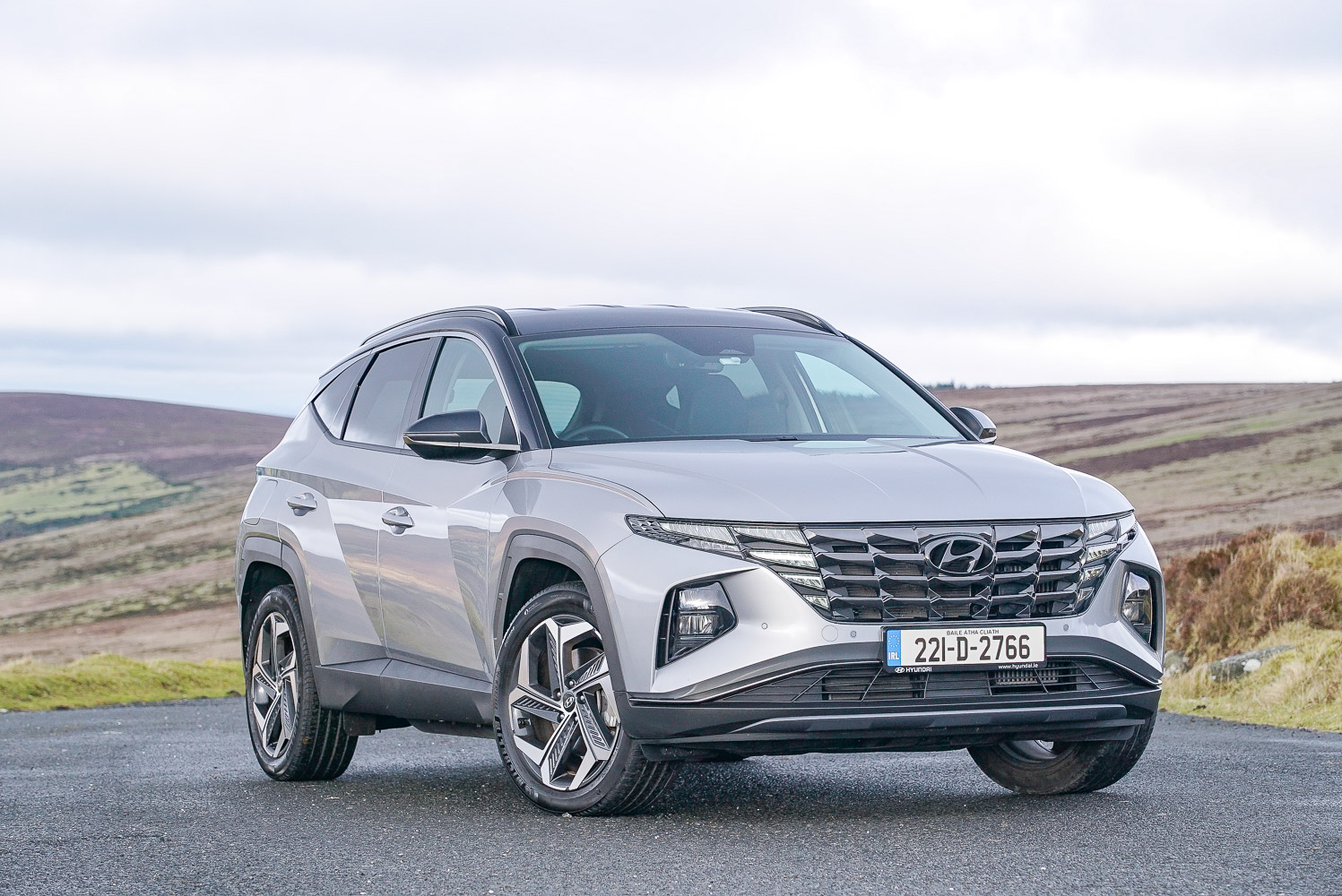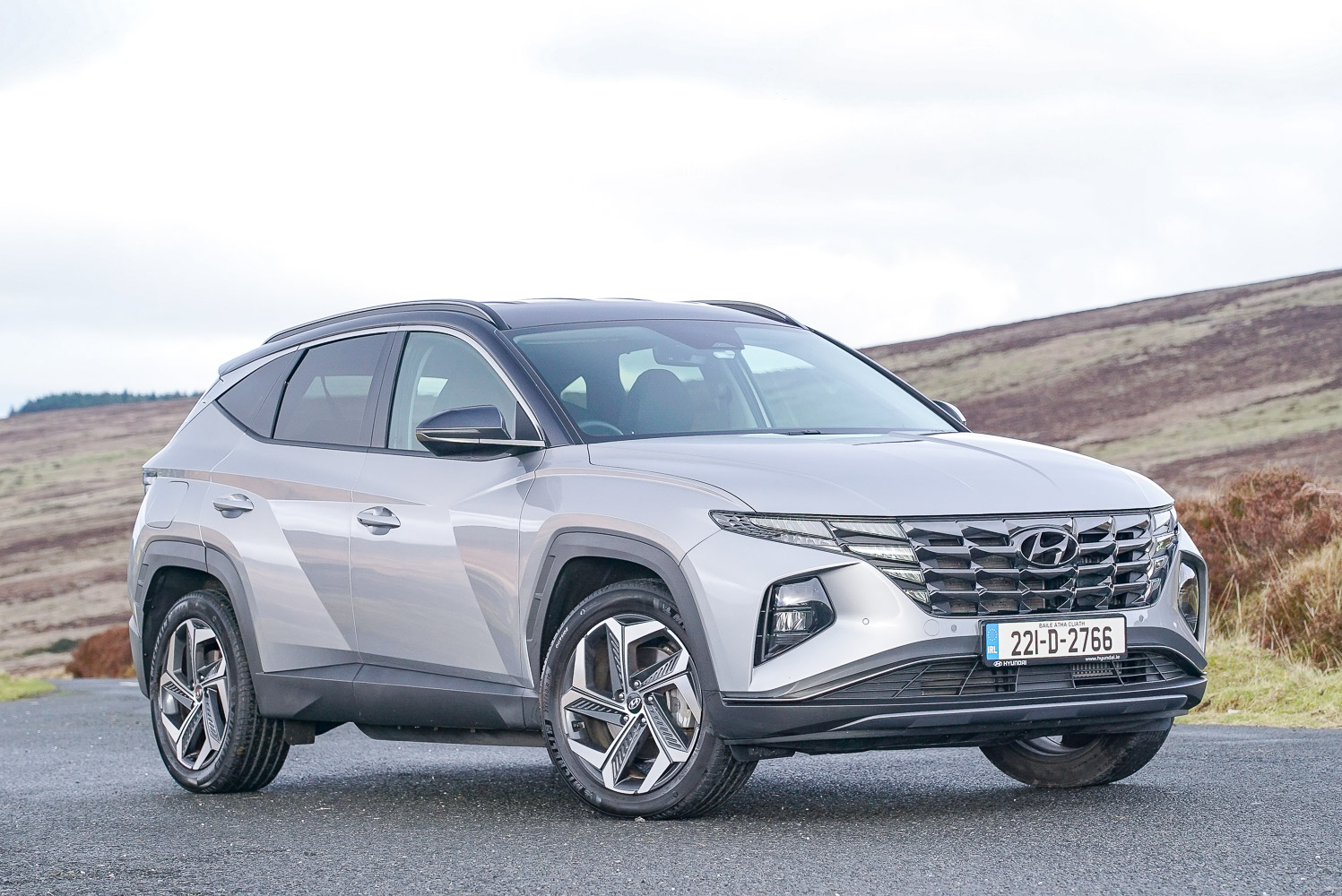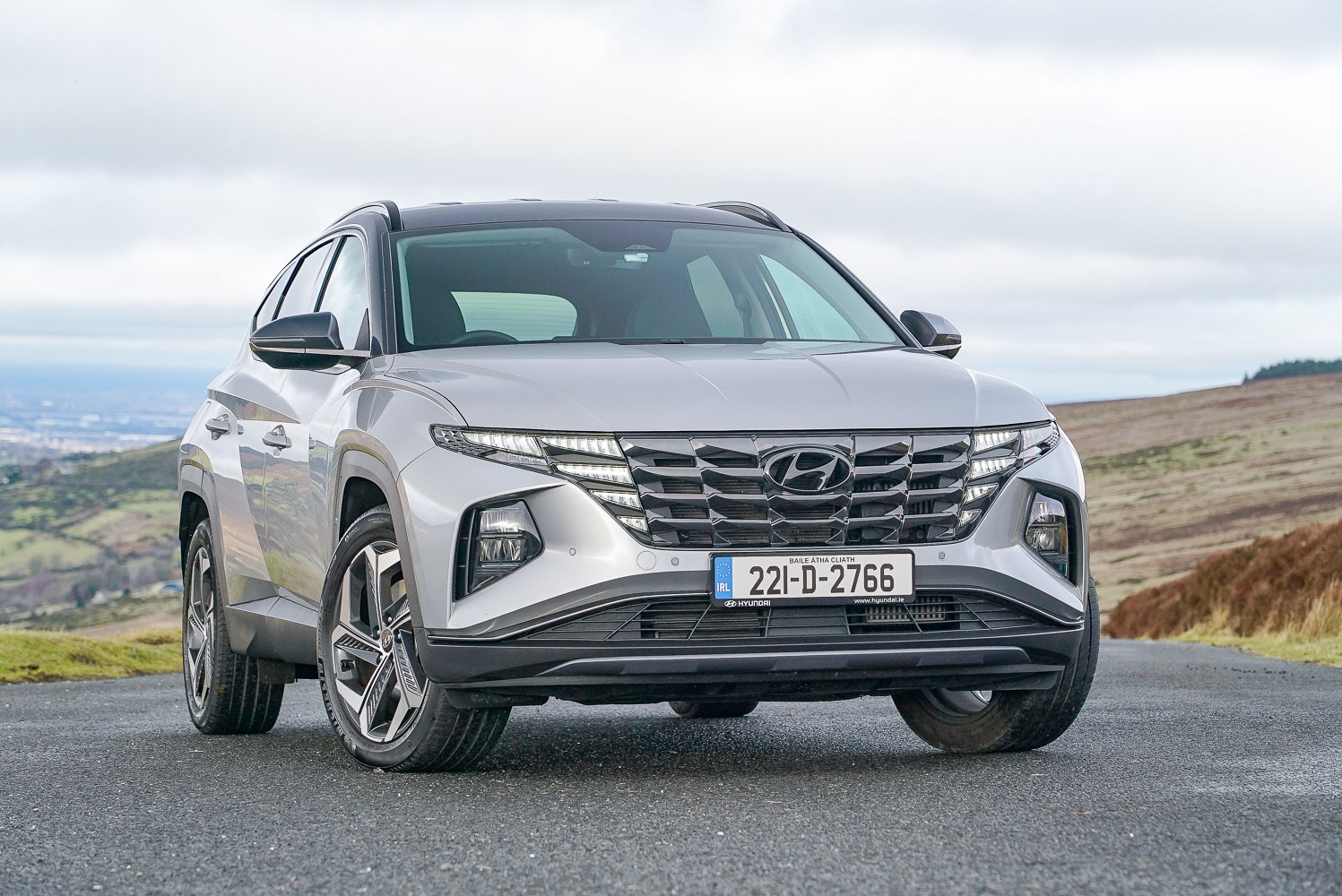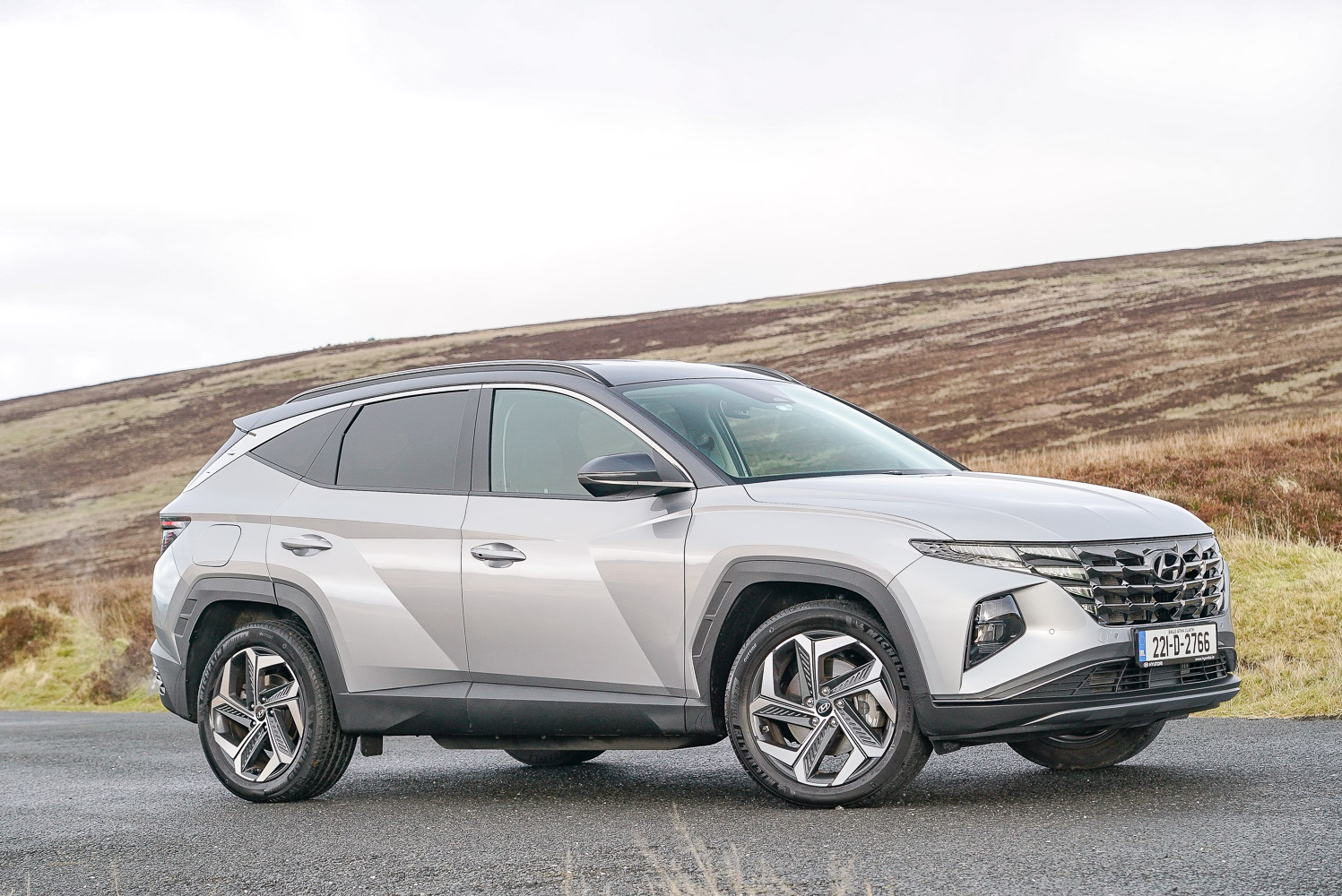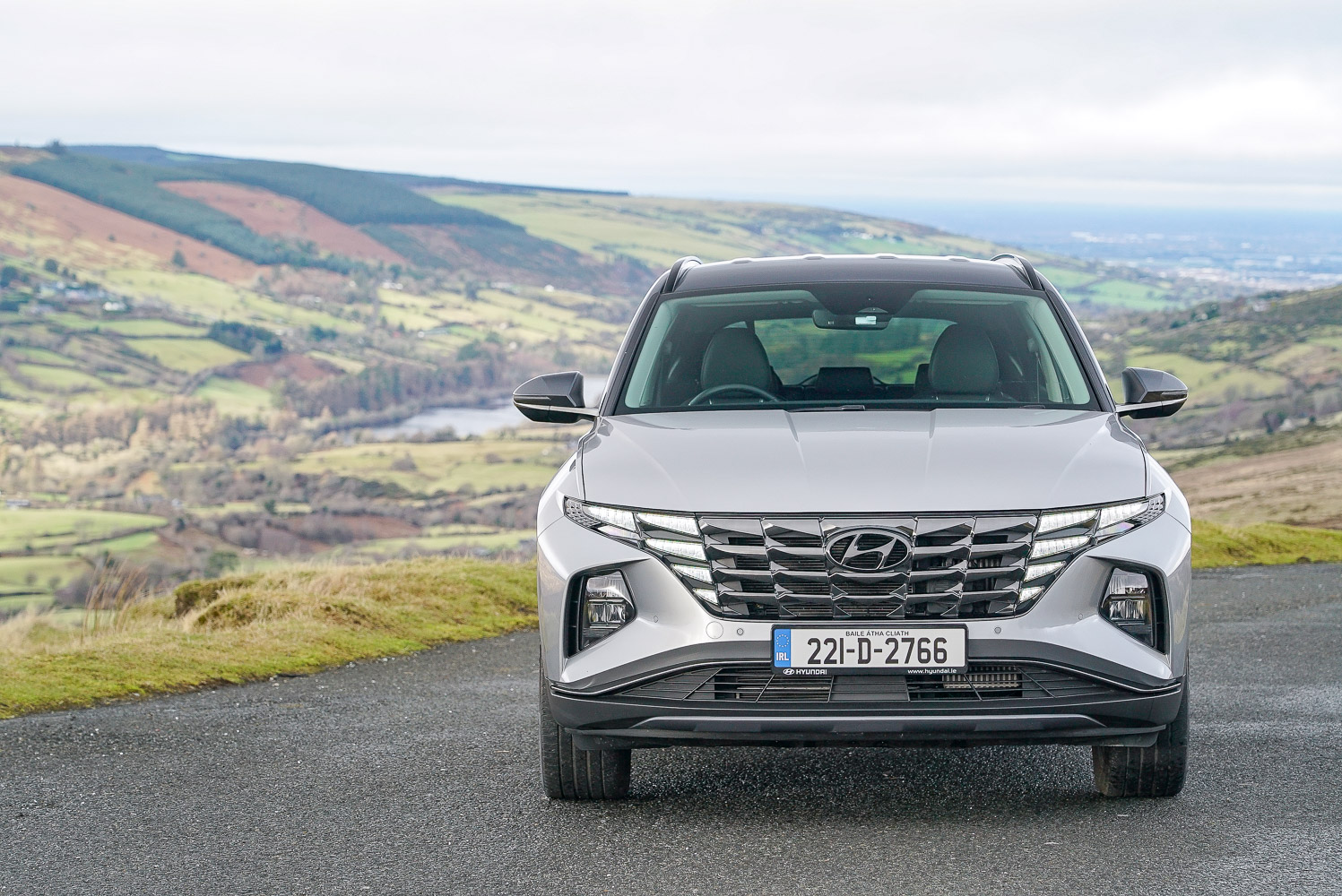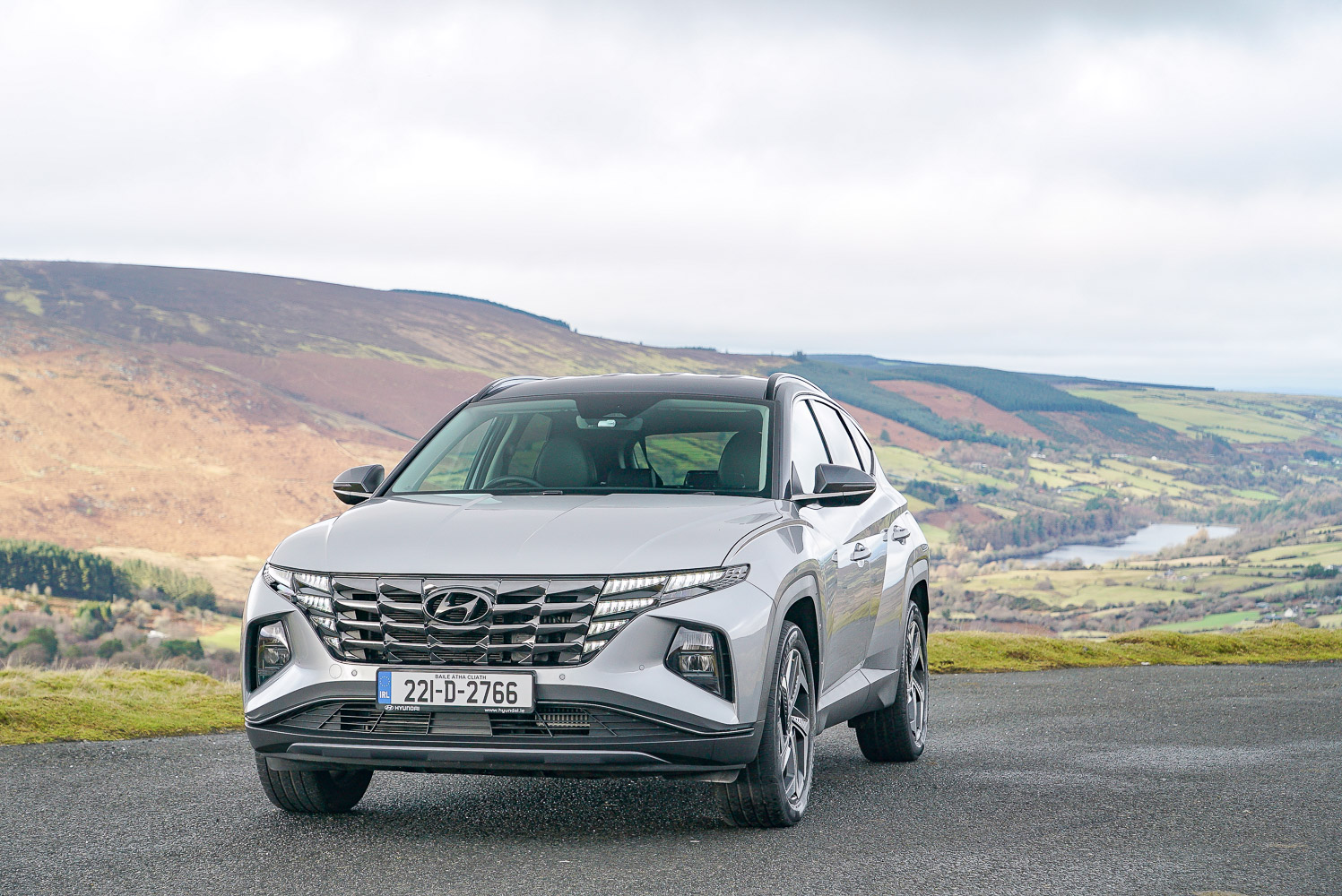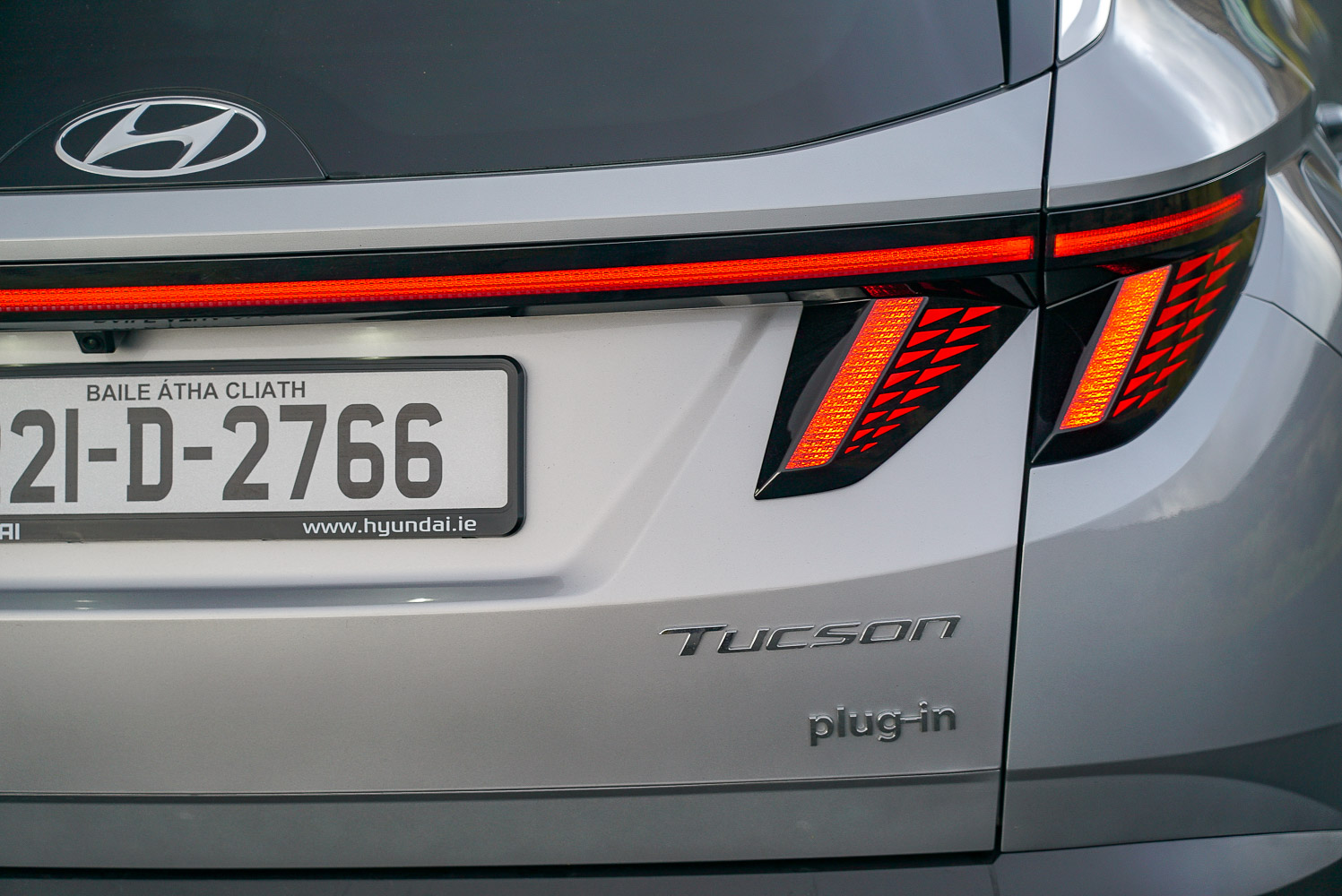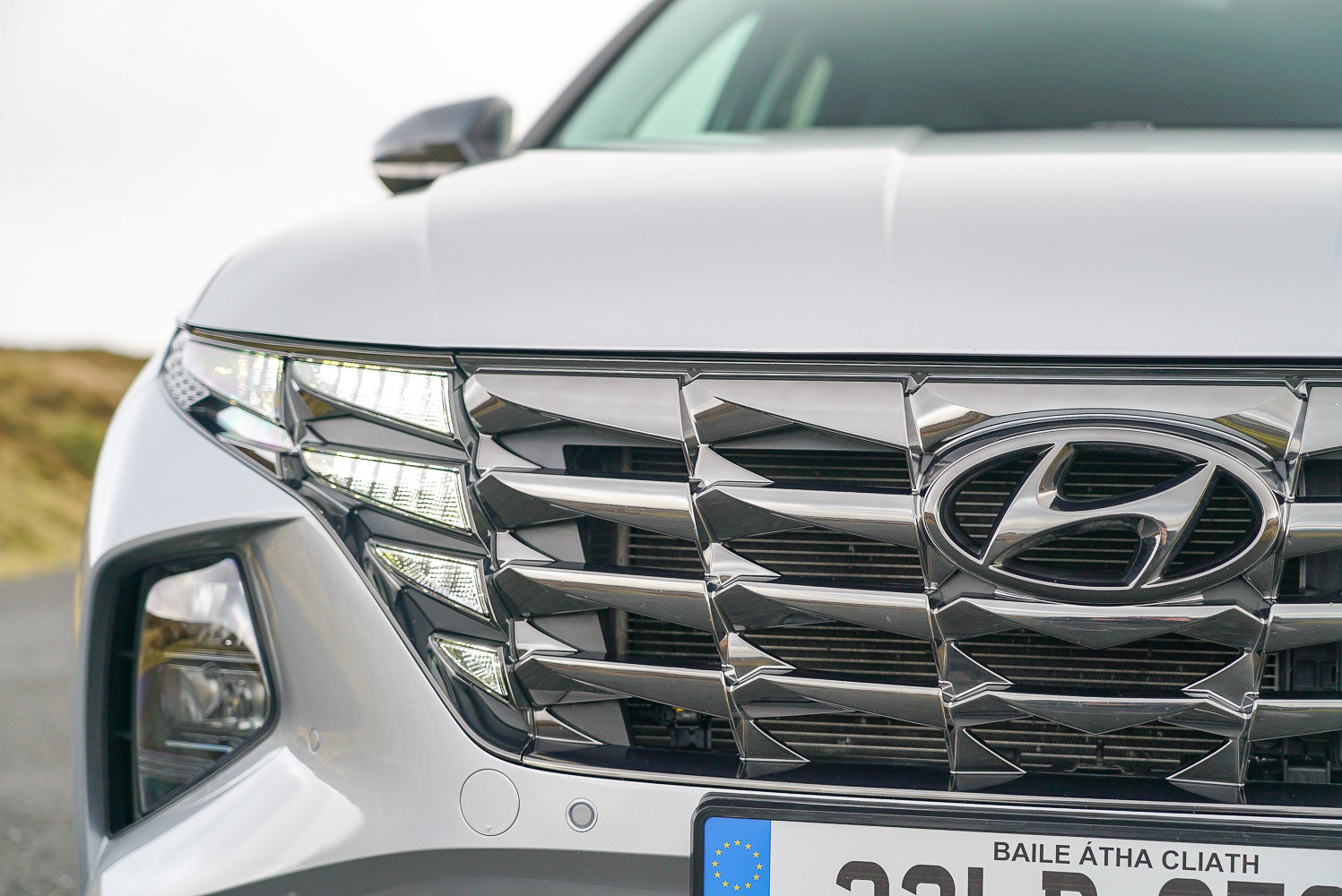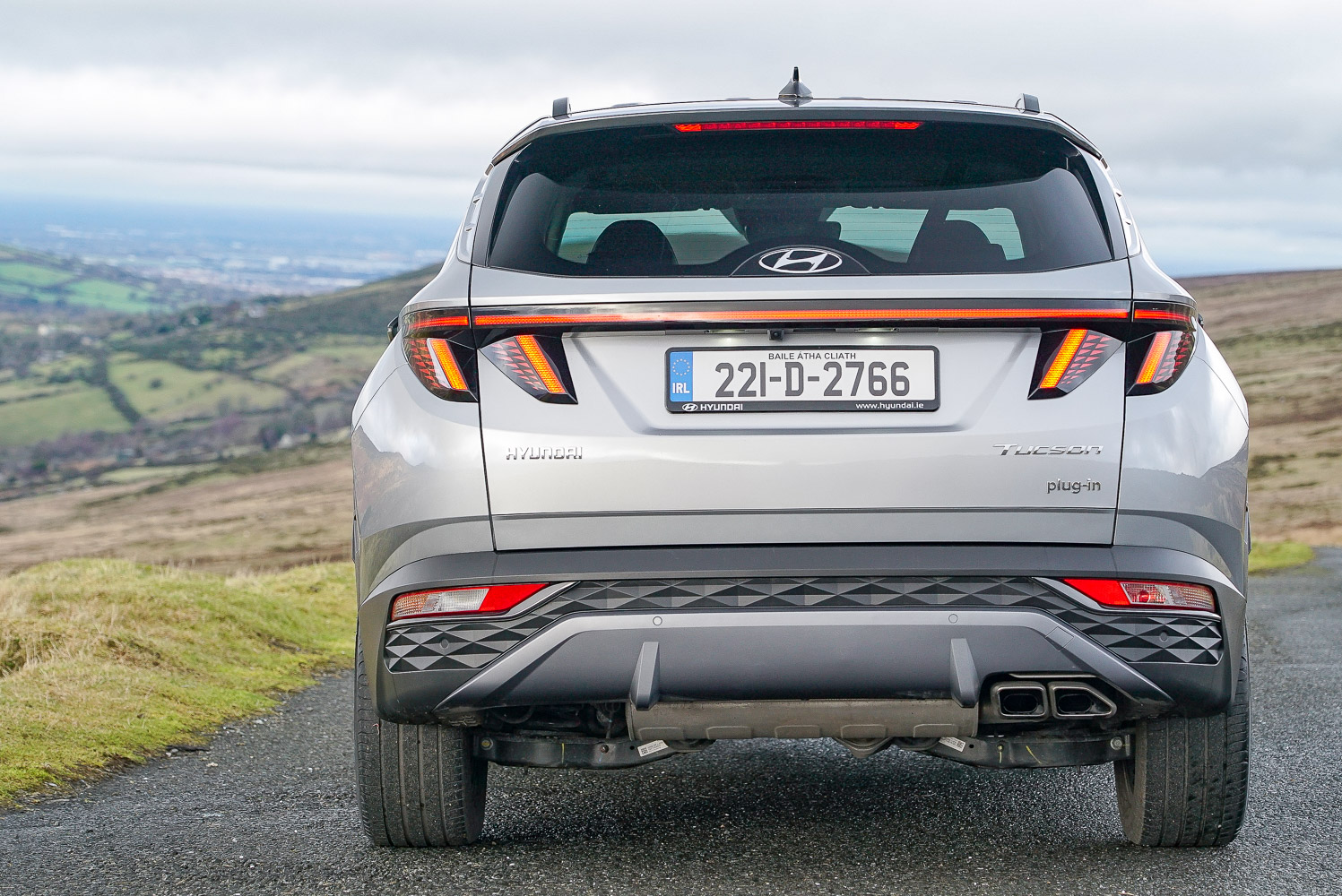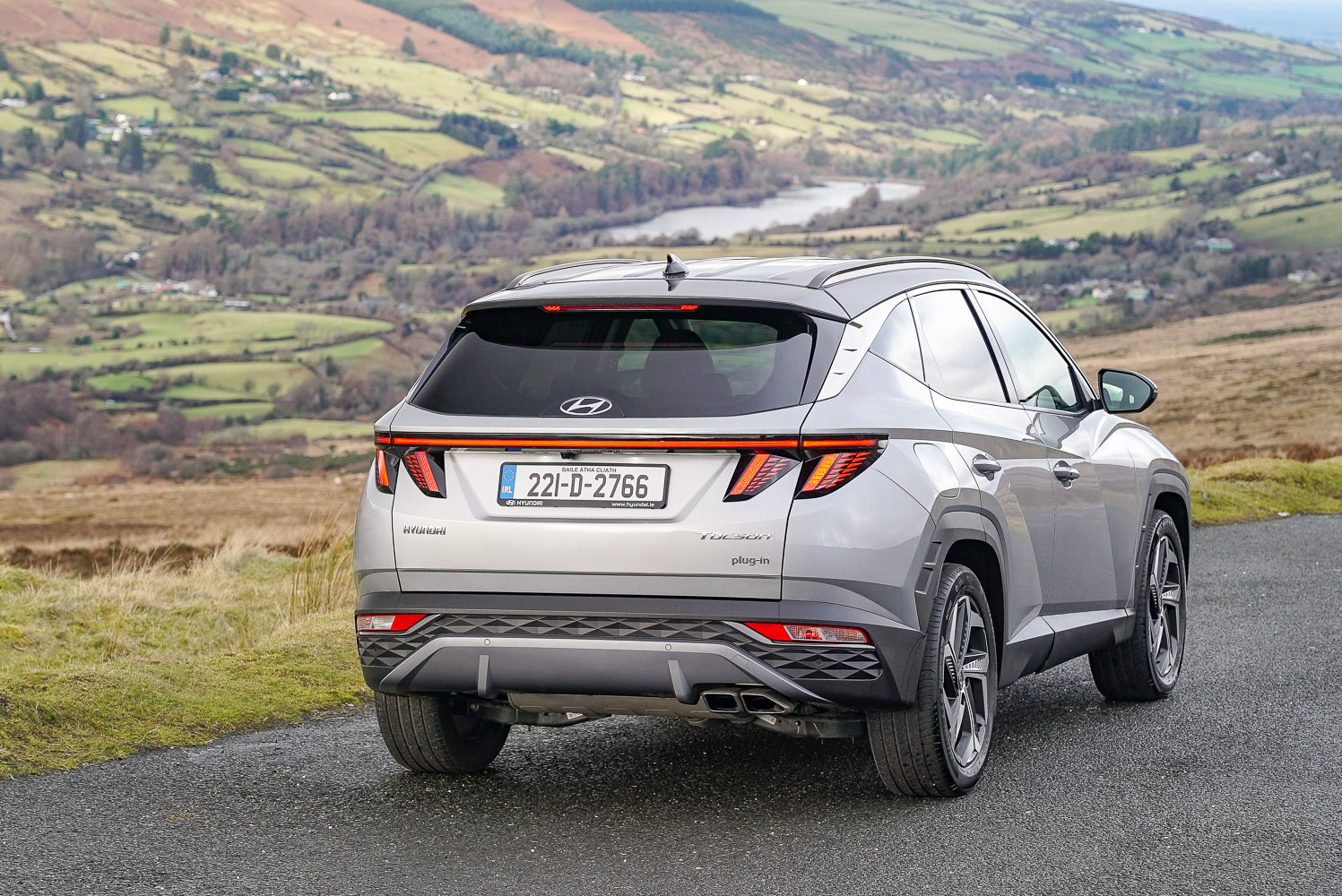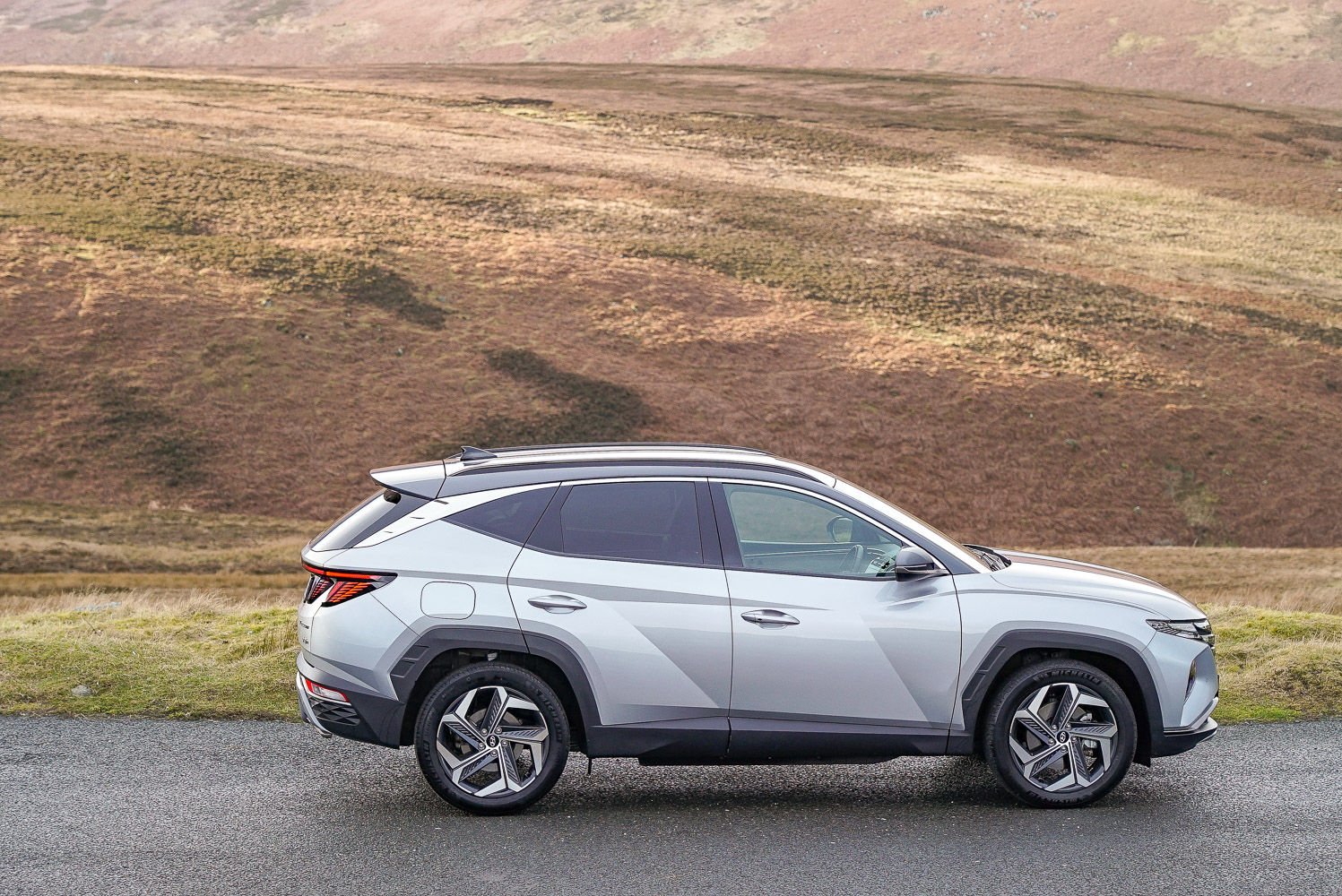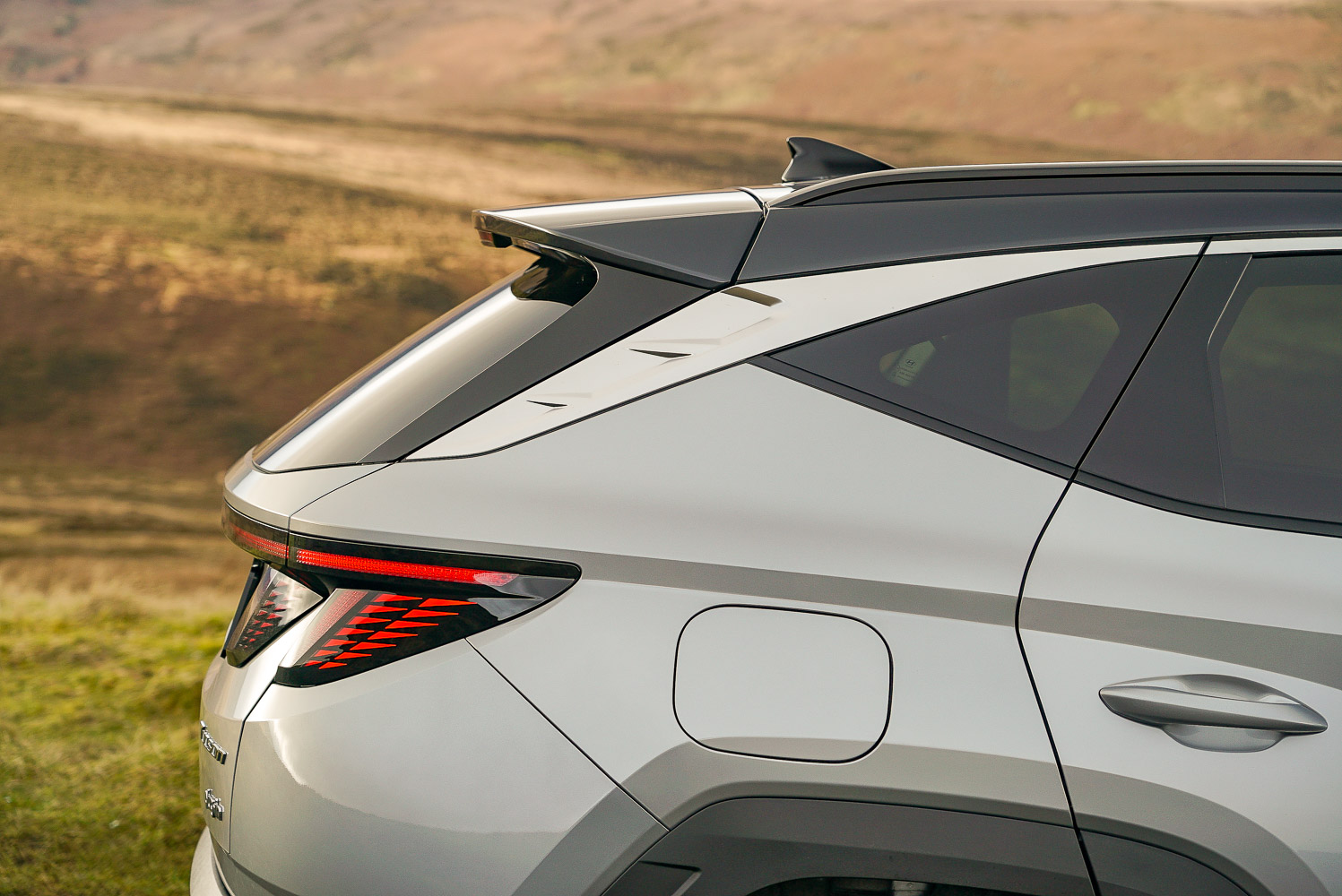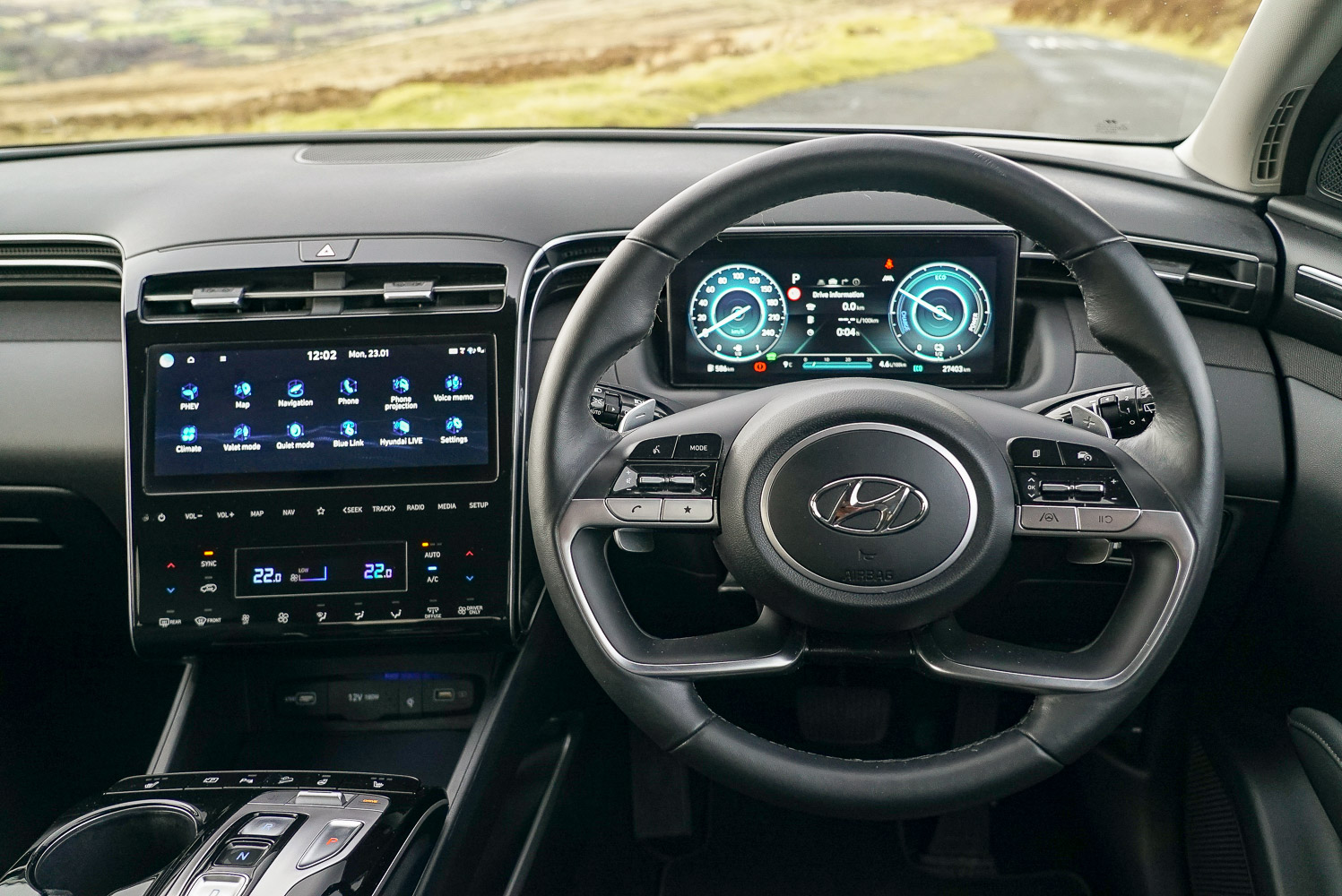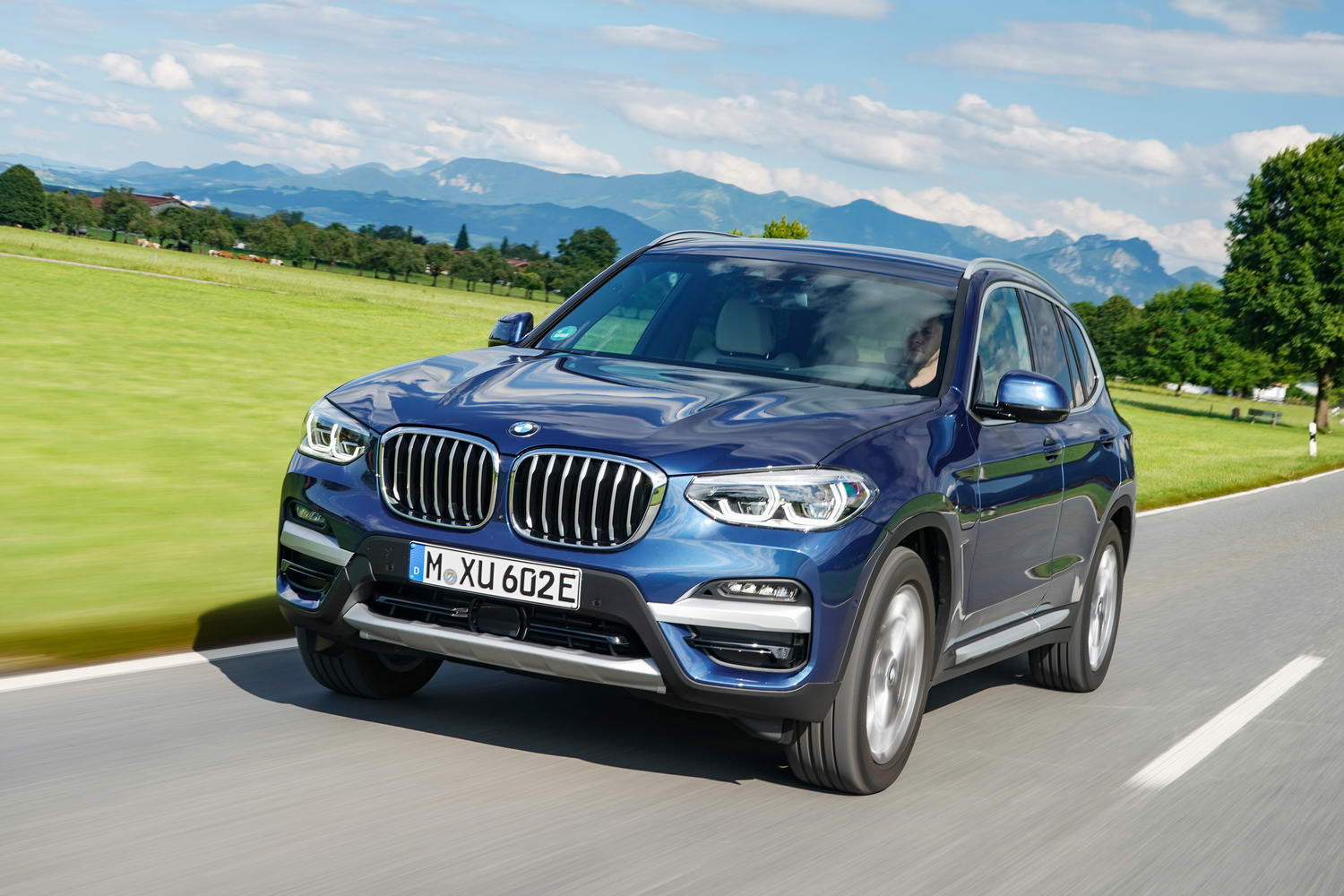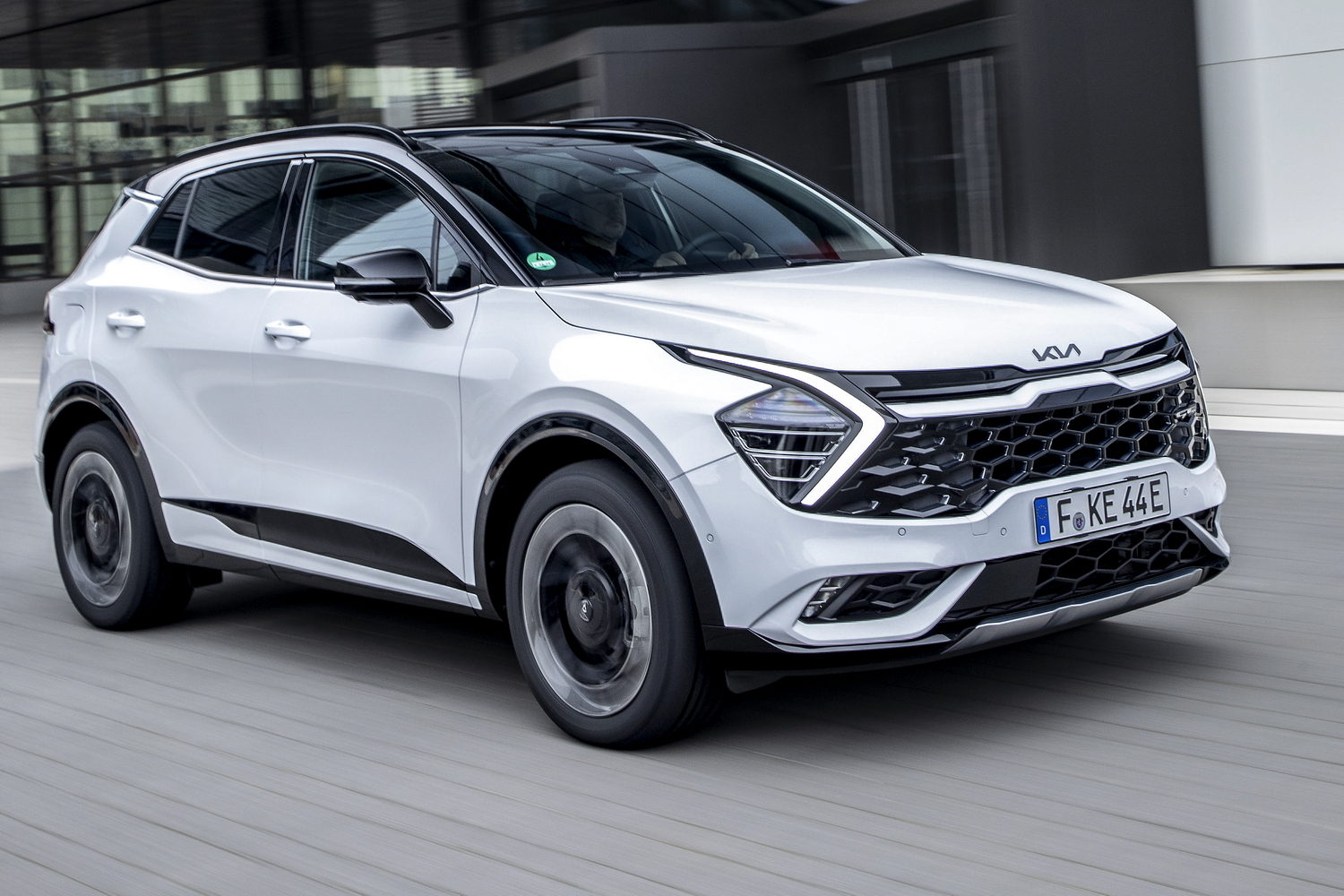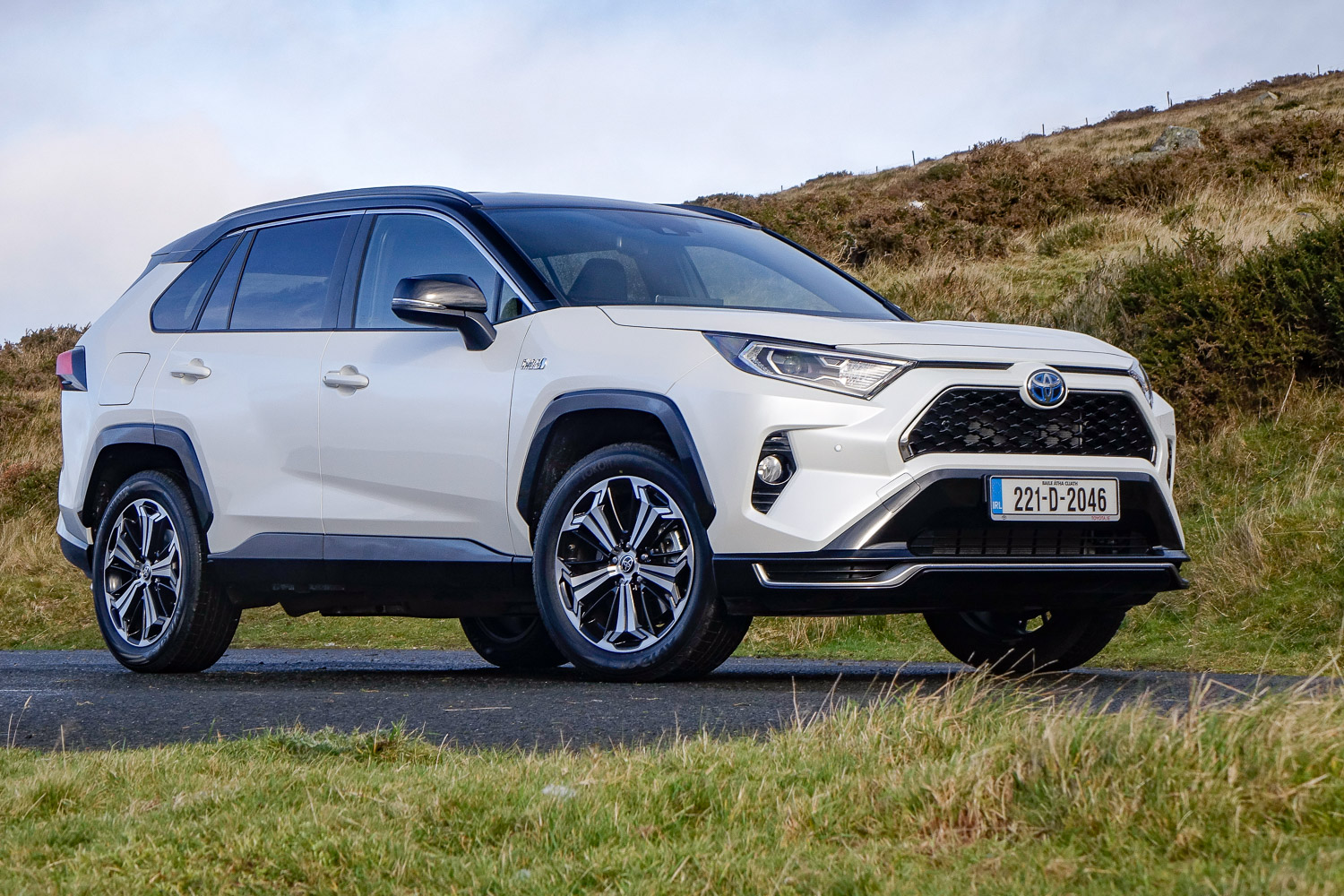Hyundai Tucson overview
Irish buyers need no introduction to the Hyundai Tucson, it would seem as it was Ireland's best-selling new car in 2022 - and it retains that mantle for the January 2023 figures. The current line-up comprises hybrid, petrol and diesel variants that cover most needs, but we've only tried the hybrid to date, so we thought it was about time that we reviewed another. Here we've lined up the most hi-tech version of all, the Tucson Plug-In Hybrid, which accounts for around 12 per cent of Tucson sales.
This model comes with the same 1.6-litre petrol engine as the hybrid version, but maximum power has increased to 265hp courtesy of it being bolstered by a more powerful electric motor and larger 13.8kWh battery. That power pack means the Tucson PHEV can officially travel up to 61 kilometres on electric power alone, while charging the battery from flat takes around an hour and three quarters from a 7kW charge point. Hyundai uses a six-speed twin-clutch automatic gearbox in its PHEV models, while the setup means four-wheel drive is standard, too.
The most obvious rival to the Tucson PHEV is its first cousin, the Kia Sportage PHEV. It uses the same running gear, with the only real differences between them being the looks warranties. Elsewhere, the family SUV market has plenty of plug-in hybrid options. The Toyota RAV4 PHEV can travel further in electric-only mode, but is slightly pricier, while the Ford Kuga offers a similar electric range to the Tucson. The Peugeot 3008 is available with three different PHEV powertrains, and it shares its tech with the Citroen C5 Aircross and Opel Grandland.
Finally, the Volkswagen Tiguan is also available with plug-in power, but is the only Volkswagen Group model in this class that's offered as such - the SEAT Ateca and Skoda Karoq are petrol or diesel only.
The Hyundai Tucson model range
The Hyundai Tucson range starts from €37,295, which gets you behind the wheel of a two-wheel-drive diesel manual model. If you want a petrol Hybrid, then add around €3,000, and that version also gains an automatic gearbox. The plug-in hybrid is around €3,200 extra on top of that, but isn't a like-for-like comparison, because all PHEVs have four-wheel drive. Line up the PHEV alongside a four-wheel-drive diesel auto model (the only alternative if you must have all-wheel drive), and the plug-in version is actually around €4,000 cheaper.
There are four trim levels available on the Tucson PHEV: Comfort Plus, Executive, Executive Plus and N Line. These are the same trims offered on the rest of the range except for N Line, which is exclusive to the plug-in model. The starting point for the PHEV is Comfort Plus, carrying a premium of around €6,000 over the starting point for the whole range. As ever with Hyundai, the Tucson is well equipped even in entry-level form, with Comfort Plus including equipment such as 19-inch alloy wheels, two-zone climate control, heated front seats, heated and electrically folding door mirrors, auto lights and wipers, cruise control, a reversing camera and an eight-inch touchscreen infotainment system with Bluetooth, Apple CarPlay and Android Auto.
All models feature a long list of safety features. As well as the usual suite of airbags and stability control systems, all versions come with forward collision alert, lane-keep assist, rear monitoring, lane follow assist, speed limit detection and driver attention alert.
Taking a look at the Euro NCAP rating for the Tucson, it achieved five stars overall when tested in 2021 thanks to adult occupant and child occupant scores of 86- and 87 per cent, respectively. The 'Safety Assist' score was 70 per cent, marked down because the AEB (Autonomous Emergency Braking) system "showed only marginal performance in tests of its reaction to other vehicles" - though an upgraded system is available. The Tucson scored 66 per cent for protection of vulnerable road users.
Move to Executive trim, and the main additions are inside, where you'll find leather upholstery, LED ambient lighting and wireless smartphone charging, along with wireless Apple CarPlay and Android Auto. It also gets rear parking sensors.
Executive Plus adds a larger (10.25-inch) touchscreen with navigation and five years of connected services, a powered tailgate, front parking sensors and sharper LED light units front and rear, along with a different exterior look with a dark chrome grille and extra chrome trim. Executive and Executive Plus models can both be had with a two-tone roof, too.
The N Line version takes its inspiration from Hyundai's N performance division models. There's a sharper body kit with a larger spoiler over the rear window, different 19-inch alloys, black trim for the headlights and grille and more body-coloured trim, while inside the seats are finished in suede and leather. Metal pedals, a black headlining and red stitching throughout boost the sporty ambience.
The Hyundai Tucson interior
Our high-spec Executive Plus model was loaded with goodies, and the modern looking cabin feels like an upmarket place to be. This version's 10.25-inch touchscreen is attractive with its widescreen layout, and it's joined by a second display of the same size for the dials. The screens are very clear, while the way the central screen is stacked between the air vents and lower climate controls (thankfully they're not embedded in the screen itself) means it's easy to use when on the move.
Interestingly, the screen for the instruments doesn't have a typical cowl over it to keep it shaded, although from our experience there are very few occasions when the dials are difficult to read because they're obscured by sunlight.
We're less keen on the push-button drive selector on the centre console, but at least it makes space for the twin cup holders and large wireless charging pad ahead of it. There's a big armrest bin further back, and the glovebox is nicely sized, but the door bins are on the narrow side.
Getting a good driving position behind the wheel is easy enough, and the heated leather seats are comfortable, although we were surprised to find that the seats were only manually adjustable at this price point.
In the back, the Tucson has 60:40 folding seats and two sets of ISOFIX child seat mounts. The seat backs can be set to different positions, although the most upright setting is only really useful if you want to maximise boot space as it's not comfortable to sit there when they're completely upright. In a more reclined setting, the seats are fine, and their high position provides a good view forward, too.
Moving to the boot, and a capacity of 558 litres is the maximum available with the seat backs upright. That's pretty generous, although the location of the drive battery under the floor means it's smaller than the standard and hybrid Tucsons by 62- and 19 litres respectively. It also means that the under-floor storage is tiny, with only just enough room for a charging cable. With the back seats fully folded (easily done via the levers located in the sides of the boot, or the shoulder-mounted levers on the seats themselves) there's 1,737 litres on offer.
The Hyundai Tucson driving experience
A raised driving position offers good visibility from the driver's seat, while the light controls and push-button drive mode selector mean driving the Tucson PHEV is simplicity in itself. With a fully charged battery, our test car recorded a range of 57km, only 4km less than the official figure.
While some PHEVs will favour all-electric driving as long as there's charge in the battery, the Tucson is more measured in its energy use, switching between electric motor and engine as it sees fit. As a result, our first drive into the mountains and back to Dublin saw an average of around three litres/100km, which compares well with the official fuel consumption of 1.4 litres/100km - official figures for plug-in hybrids are notoriously difficult to emulate in real-world driving.
Overall, the Tucson PHEV performs well, but it's not exactly an exciting car to drive. The suspension copes admirably with poor roads and the car grips tenaciously when it's being flung about, but the lifeless steering and brake pedal provide zero communication about what's going on beneath you. It's better to take things easy and revel in the quiet running of the plug-in powertrain. The car's ride isn't the smoothest around, but passengers aren't going to be complaining about feeling uncomfortable either.
Off the line, the Tucson's plug-in powertrain is very snappy in its responses, courtesy of the instant torque on offer from the electric motor. However, mid-range acceleration isn't quite so rapid once the engine cuts in, but it builds again when full power arrives higher in the rev range - though the sound of the engine will dissuade drivers from doing that too often.
Our verdict on the Hyundai Tucson
Our time with the Tucson PHEV just reaffirmed why Hyundai's family SUV is Ireland's best seller. It looks distinctive, has a spacious interior with a high sense of quality and does everything well, albeit without any sort of involvement for those looking for a car that's fun to drive. The plug-in model is efficient when used in the manner that suits this sort of powertrain, and it offers a significant amount of performance, as well as all-wheel drive, in a package that's cheaper and easier to get along with than the equivalent diesel Tucson. The PHEV represents the pinnacle of Tucson ownership, and it's good enough to carry that mantle off.

